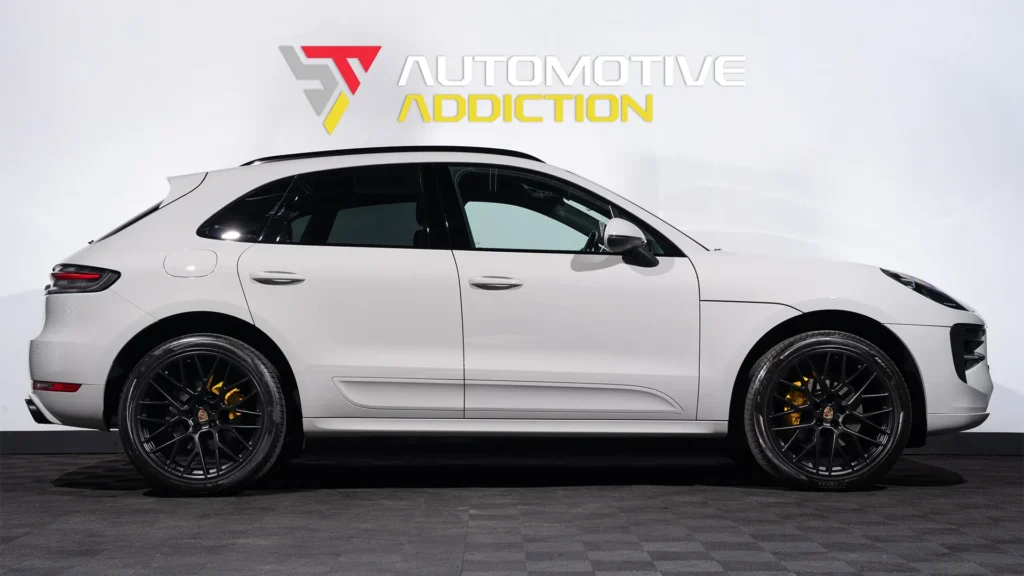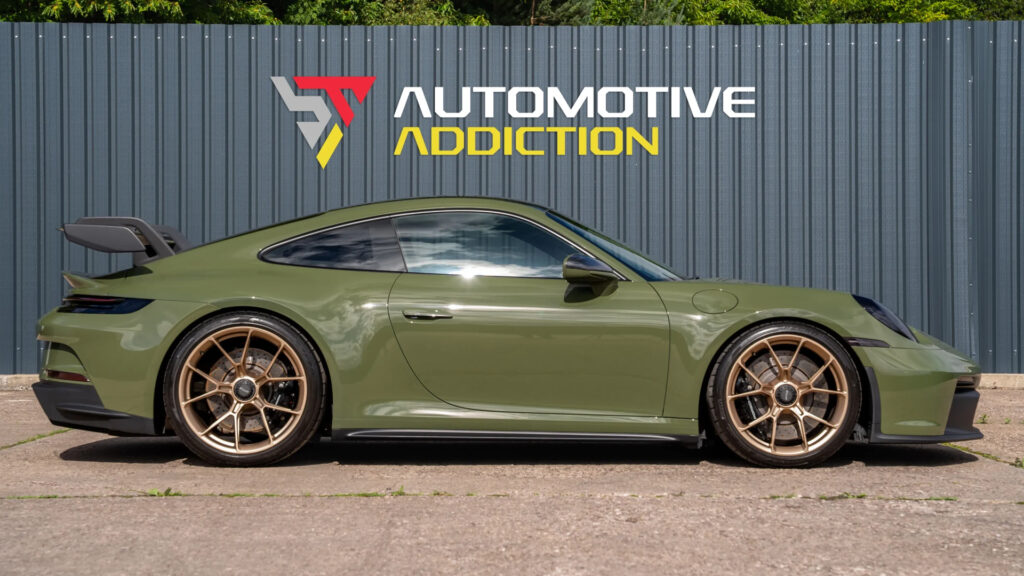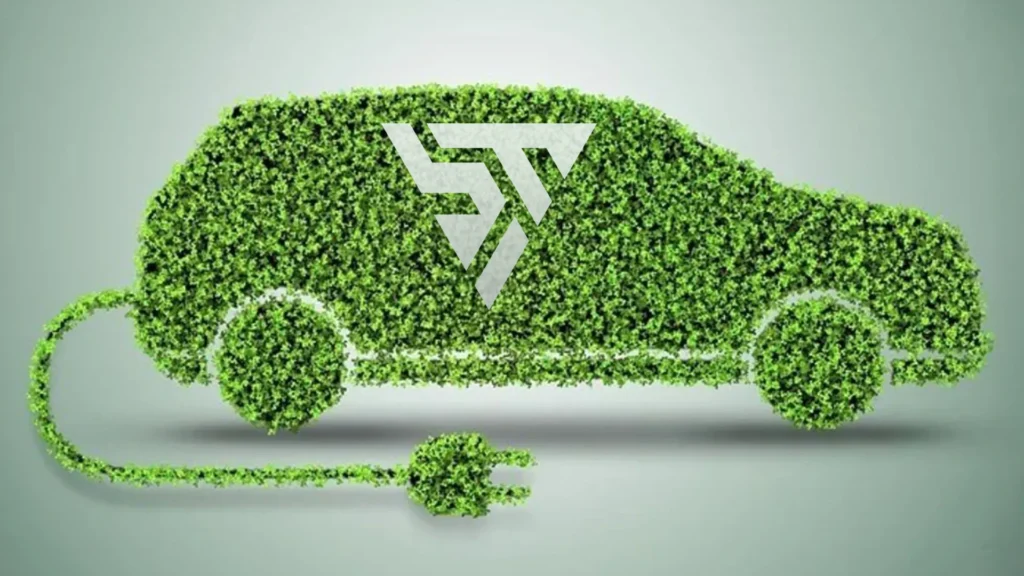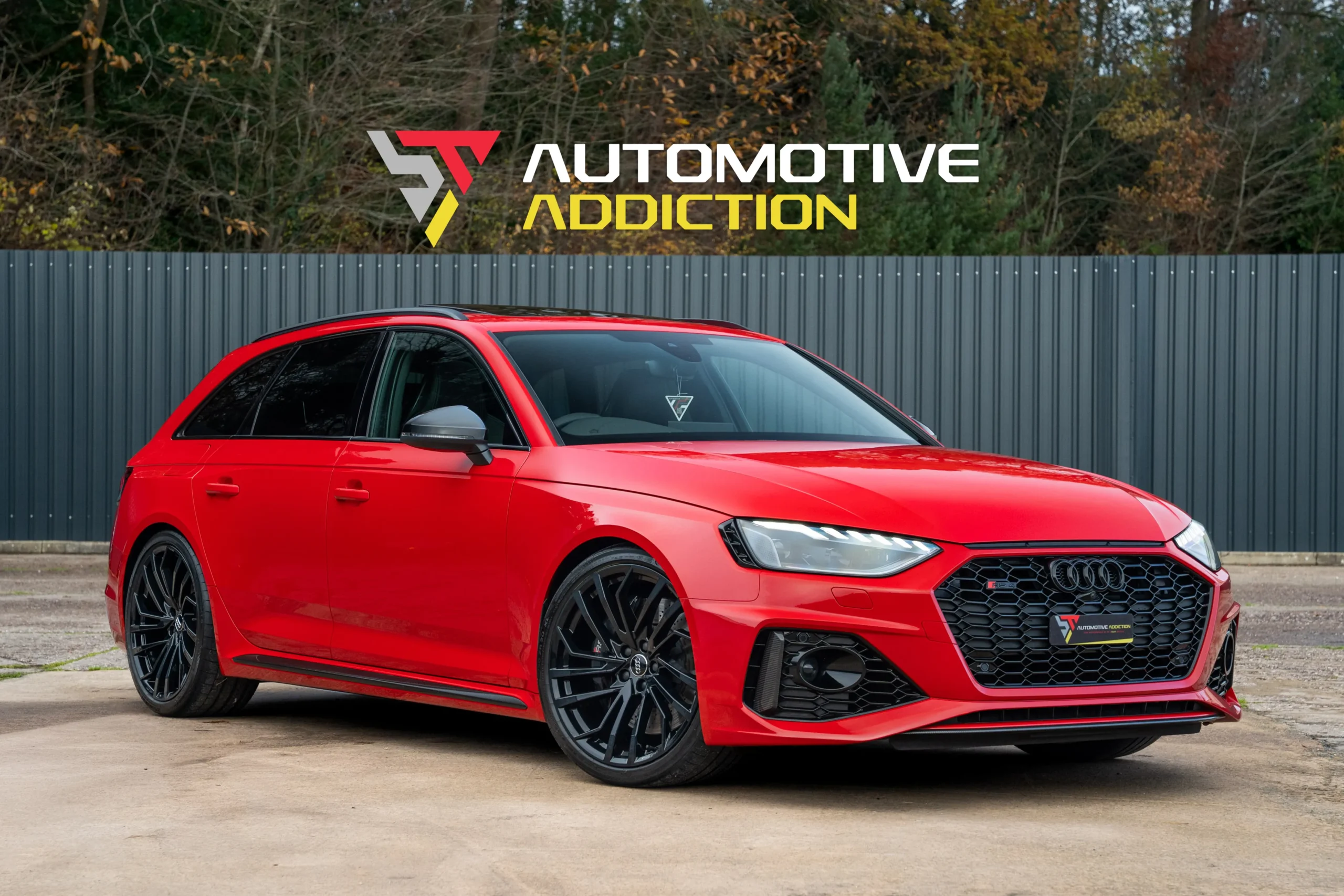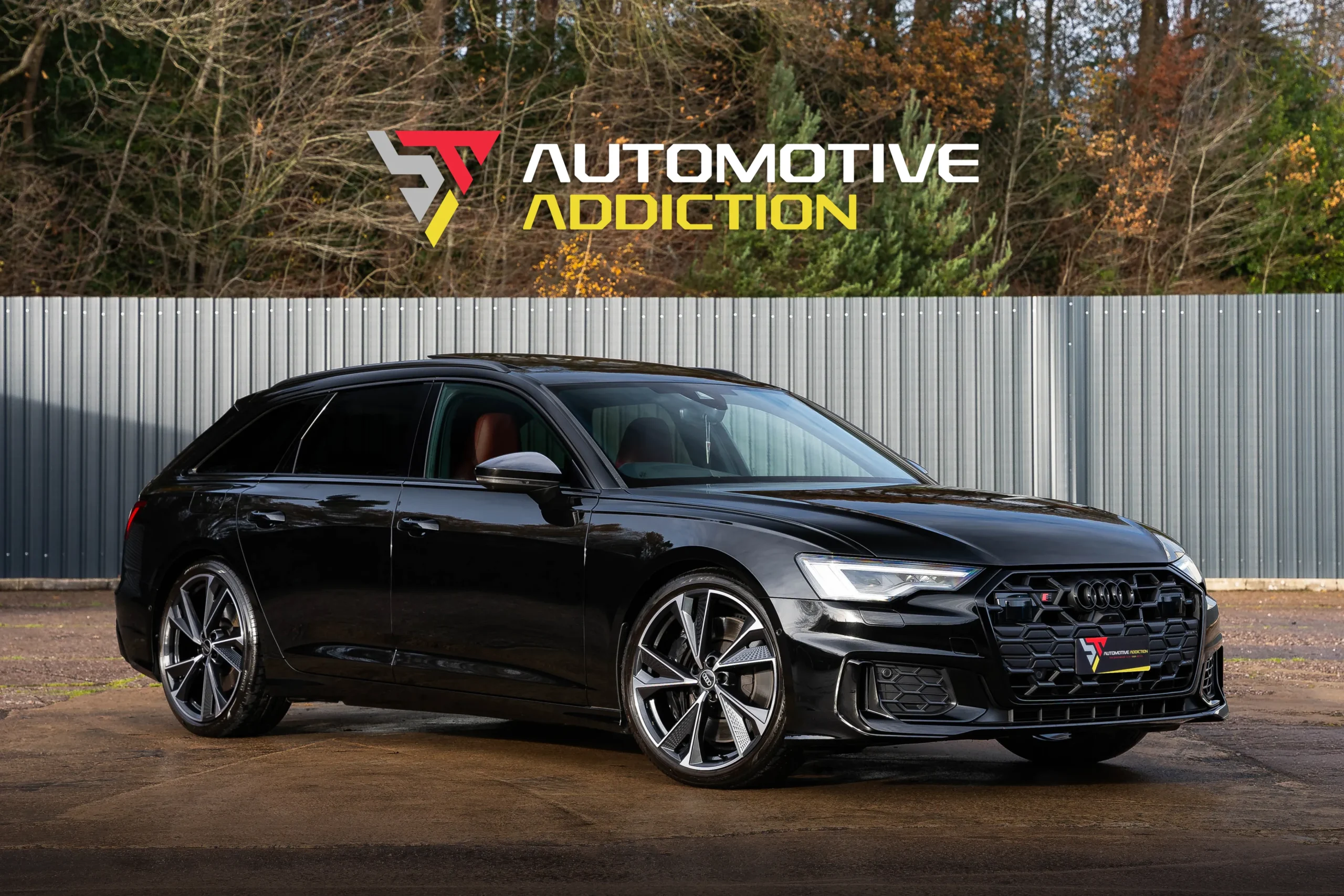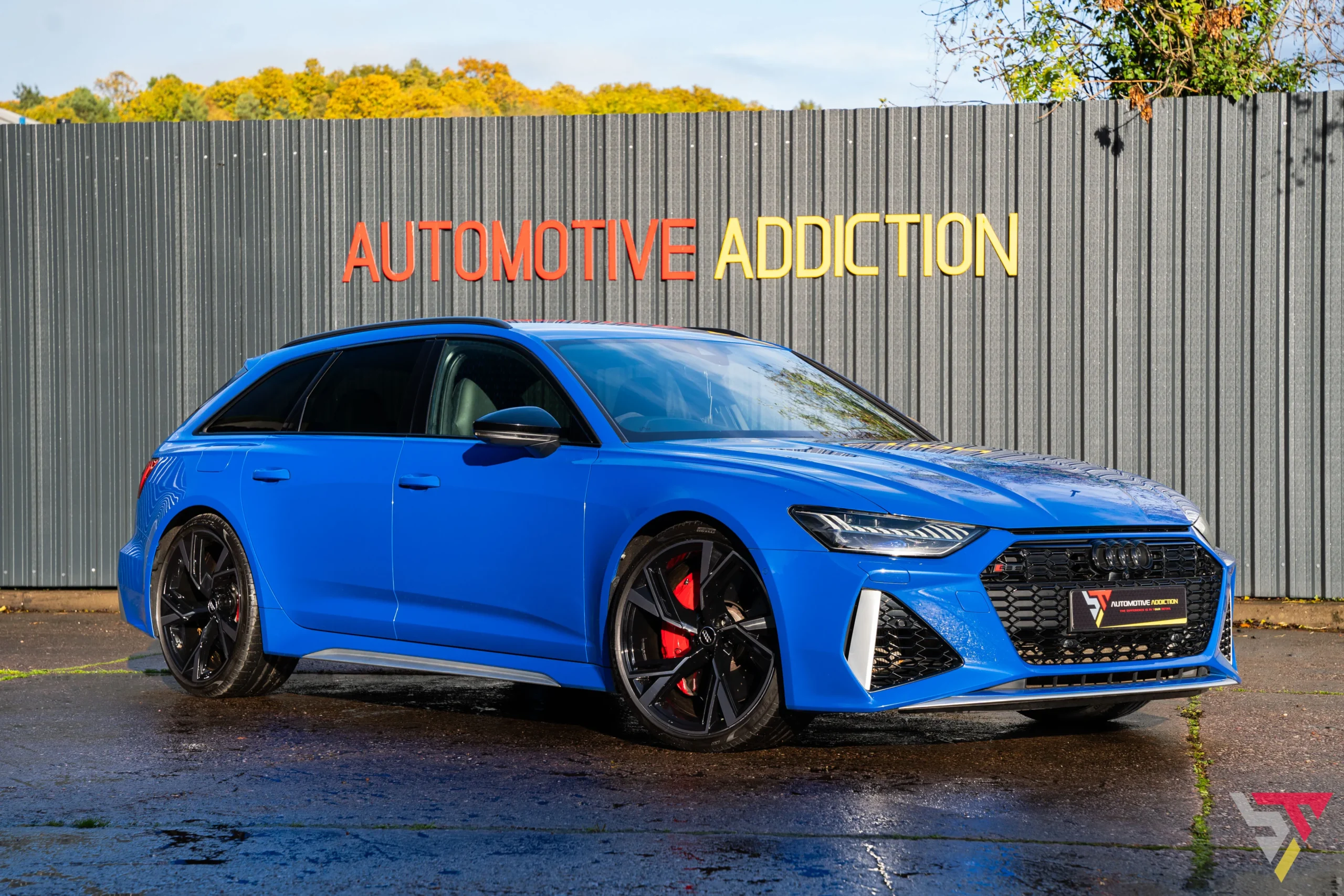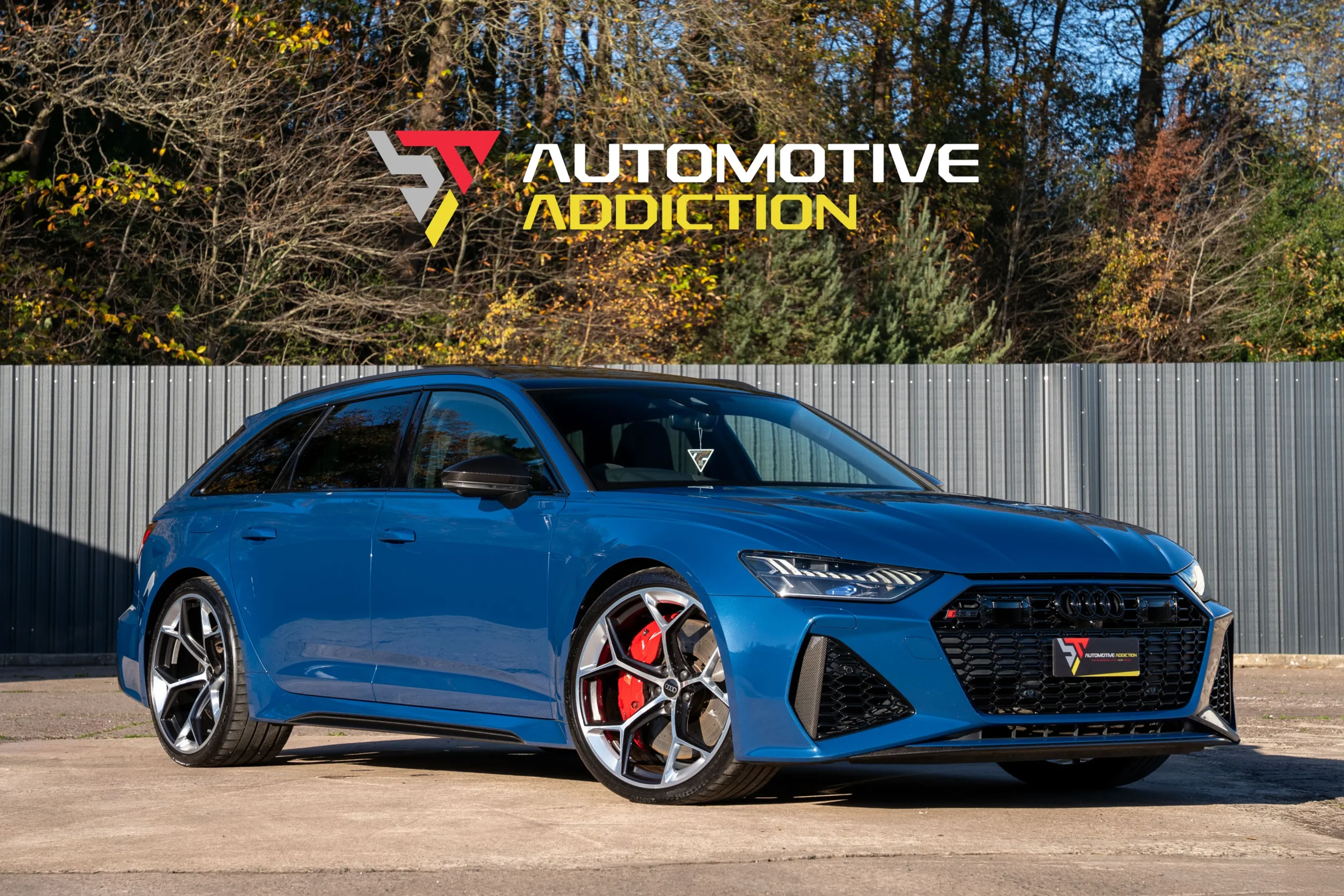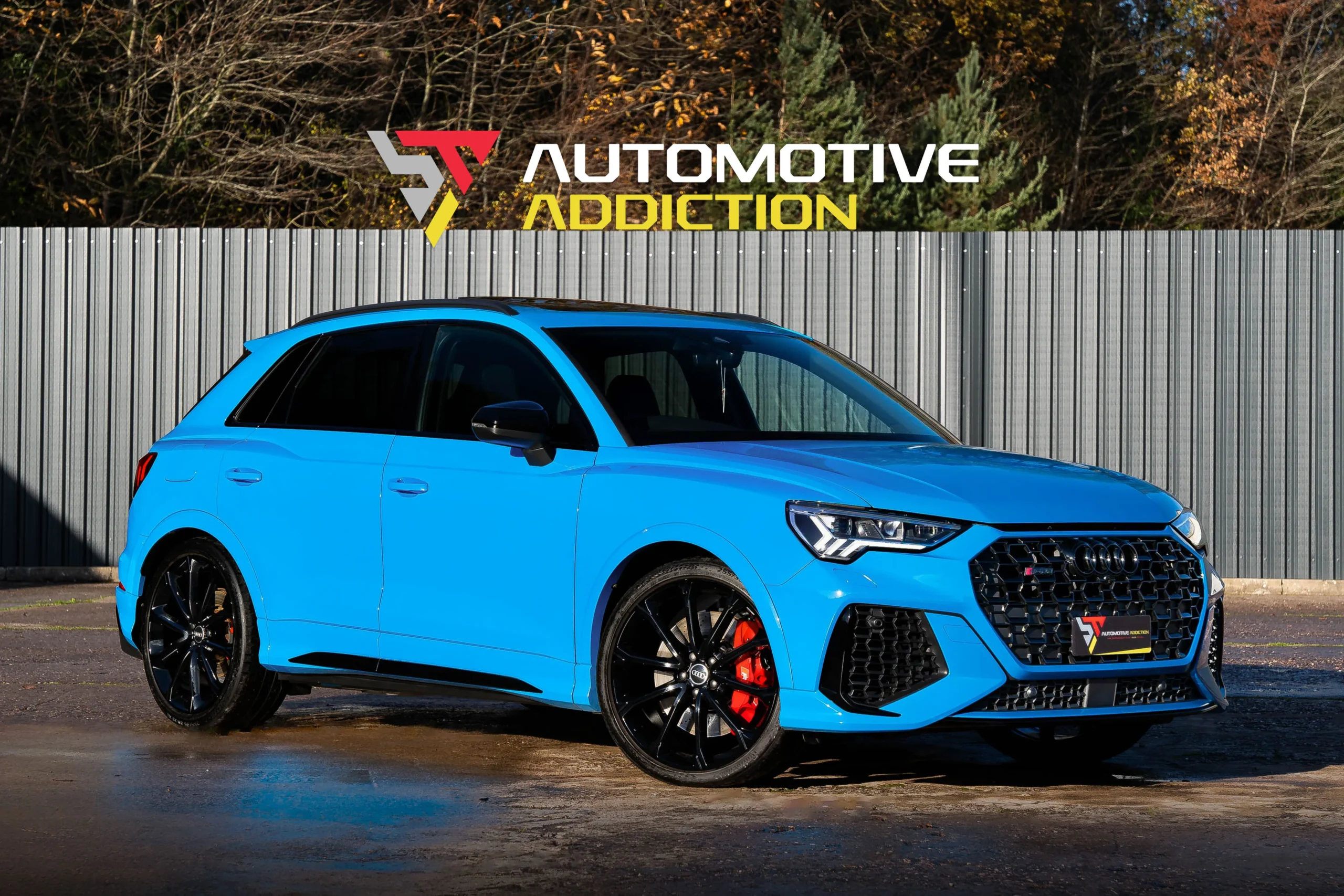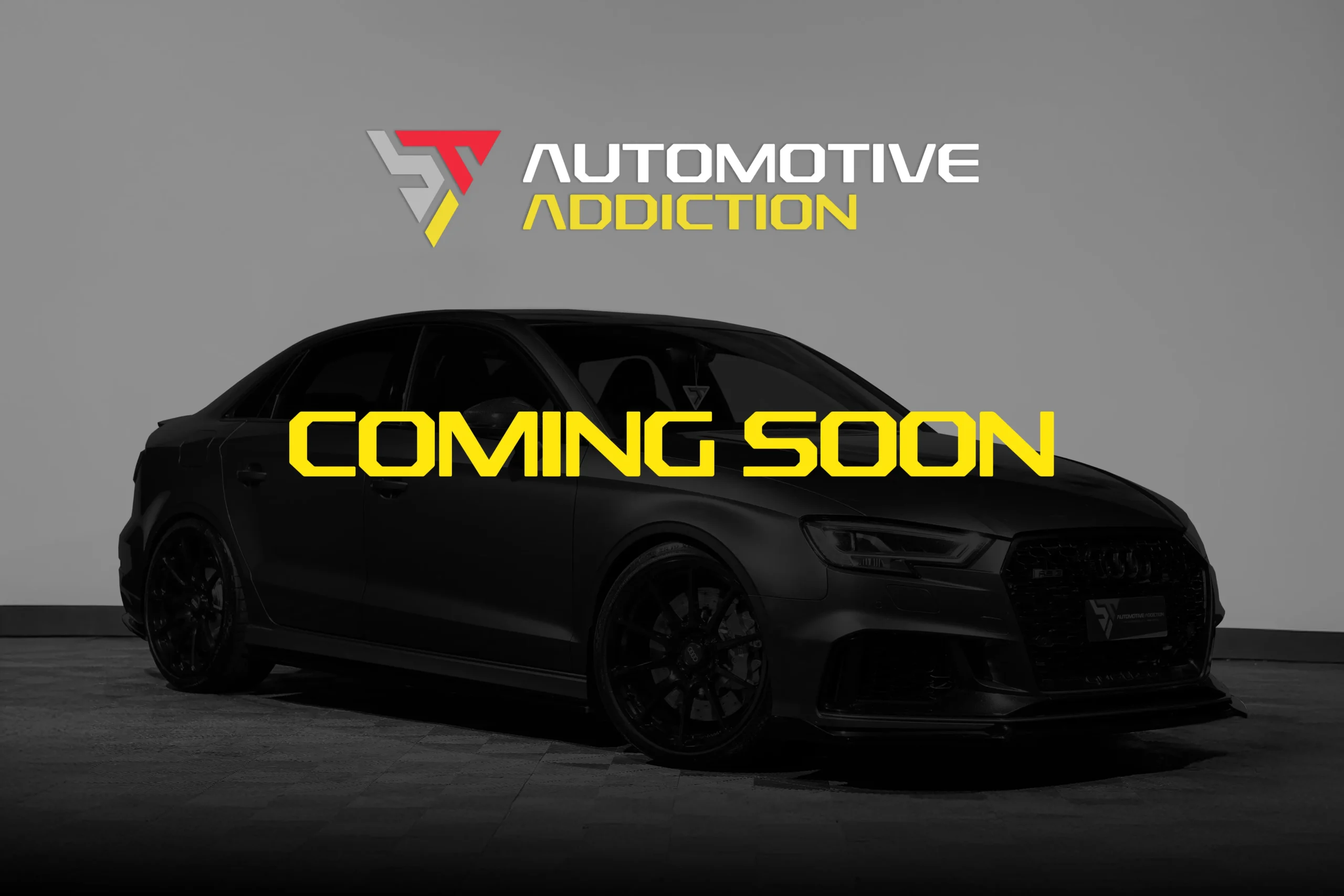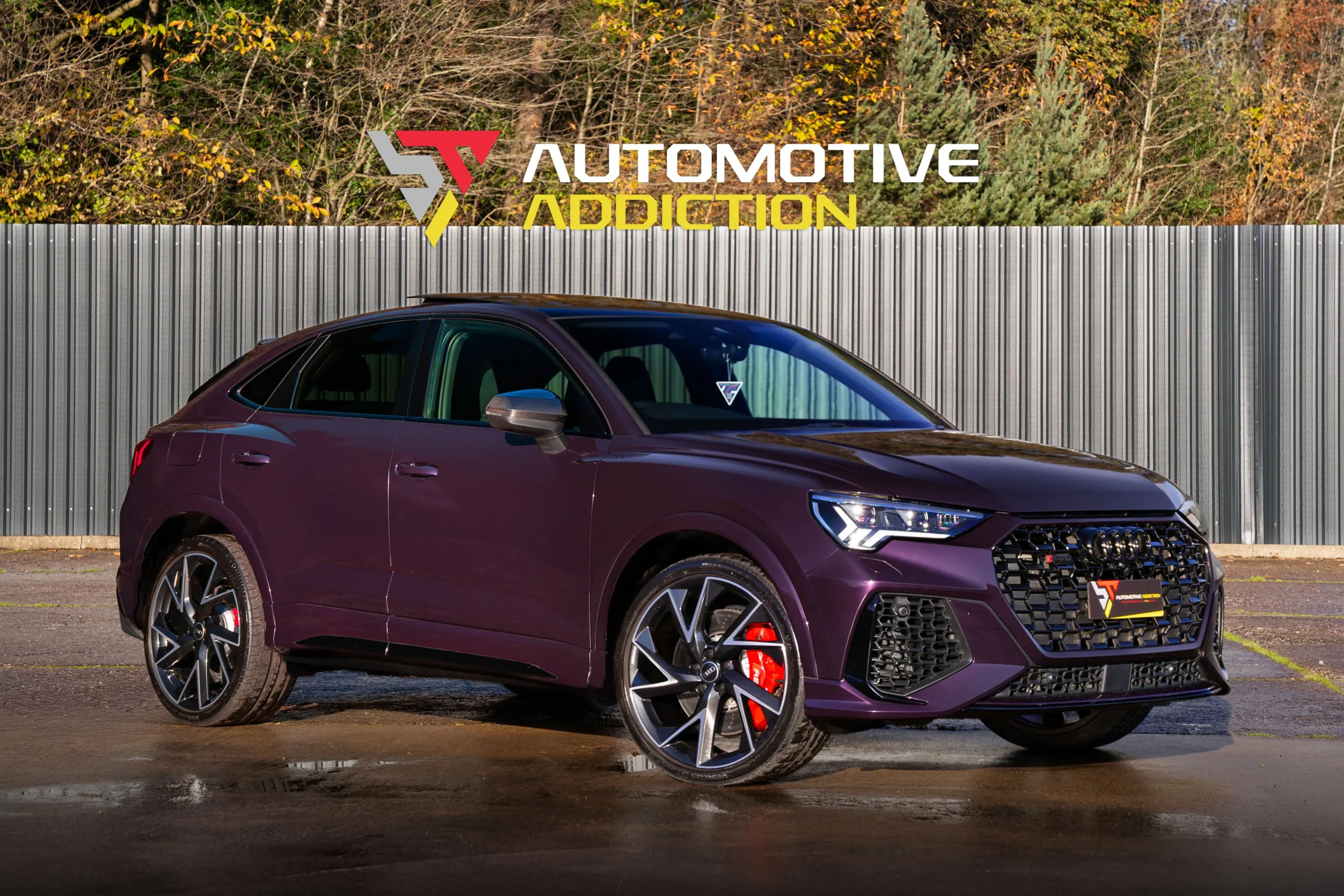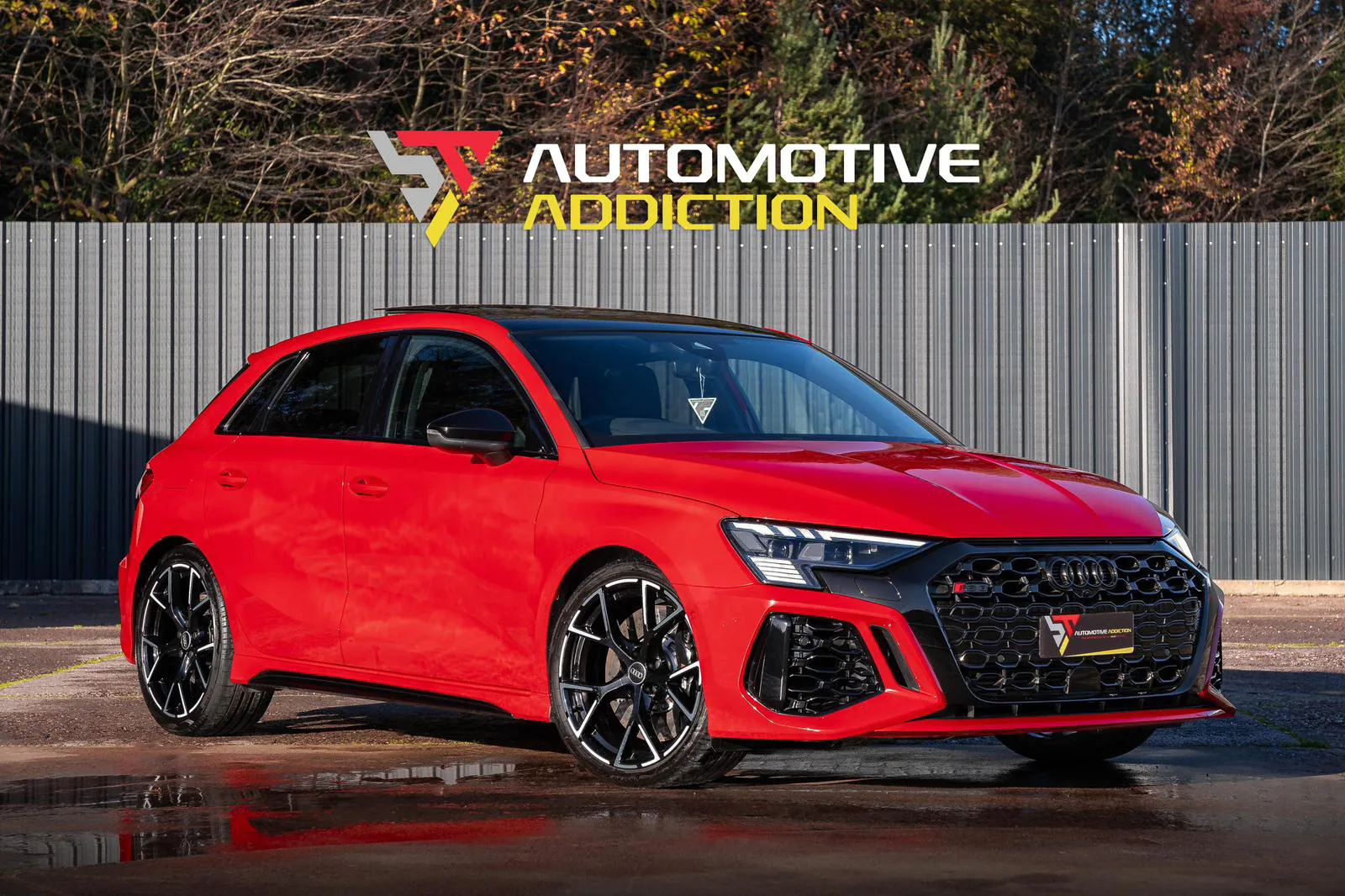Here at Automotive Addiction, the UK’s premier independent specialist for Audi RS models, we have a passion for these models that runs much deeper than simple car sales. We have sold over 700 examples of the Ingolstadt firm’s iconic RS models since 2015, many of which have been sourced and subsequently sold through our connections within the tight knit community of the Audi RS Owners Club.
As long time RS enthusiasts ourselves, we live and breathe these amazing cars and that passion is reflected in everything we do. Whether through imparting our extensive knowledge to fellow RS fans online through our role as a group expert on the Audi RS Owners Club forum, the Audi RS3 8Y page and Audi RS6GT owners club page; offering comprehensive tuning and modifying advice, or simply guiding an RS virgin through selecting a car and making their first purchase, our experienced team is always on hand to help. And with this Audi RS3 8V Buyers Guide we hope you will be able to identify factory extras.
We pride ourselves on always having an superb selection of RS vehicles in stock, all with the lowest mileages, most desirable specifications and in a range of jaw-droppingly unique colourways – and that’s before they undergo our industry-leading pre-sales preparation process!
Although we deal in all RS models, the one that has become the core of our business is the iconic RS3, with the 8V generation being what we, and many others, consider to be the sweet spot in the range.
Prefer watching an in-depth buyer’s guide instead? Click here to watch the video, or continue reading the article below
Audi RS3 8V Buyers Guide:
The Audi RS3 8V has become a modern legend in the performance car world, representing a perfect fusion of practicality, luxury, and staggering speed. Introduced in 2015, the RS3 8V was Audi Sport’s answer to the growing demand for compact supercar slayers – cars that offered everyday usability without compromising on performance. With its five-cylinder turbocharged engine, Quattro all-wheel-drive system, and aggressive styling, the RS3 8V quickly earned a reputation as a groundbreaking hot hatch and compact saloon.
At the heart of the RS3’s legacy is the legendary 2.5-litre TFSI five-cylinder engine – a nod to Audi’s rallying heritage. With a distinctive warble and a power delivery that rivals far more expensive sports cars, the engine became the centrepiece of the RS3’s appeal. It also helped re-establish Audi as a brand with real performance pedigree beyond straight-line speed.
The RS3 8V was also one of the first compact cars to consistently outperform rivals from BMW and Mercedes-AMG in real-world conditions. Thanks to Audi’s Quattro system, it could put power down in almost any weather, making it usable year-round. This everyday performance, combined with premium materials and understated but aggressive styling, made the RS3 an instant classic.
Although often referred to as a single generation, the RS3 8V actually went through three distinct iterations: the pre-facelift (2015–2016), the facelift (2017–2018), and the “DNWA” (2019–2020), each bringing key upgrades and refinements.
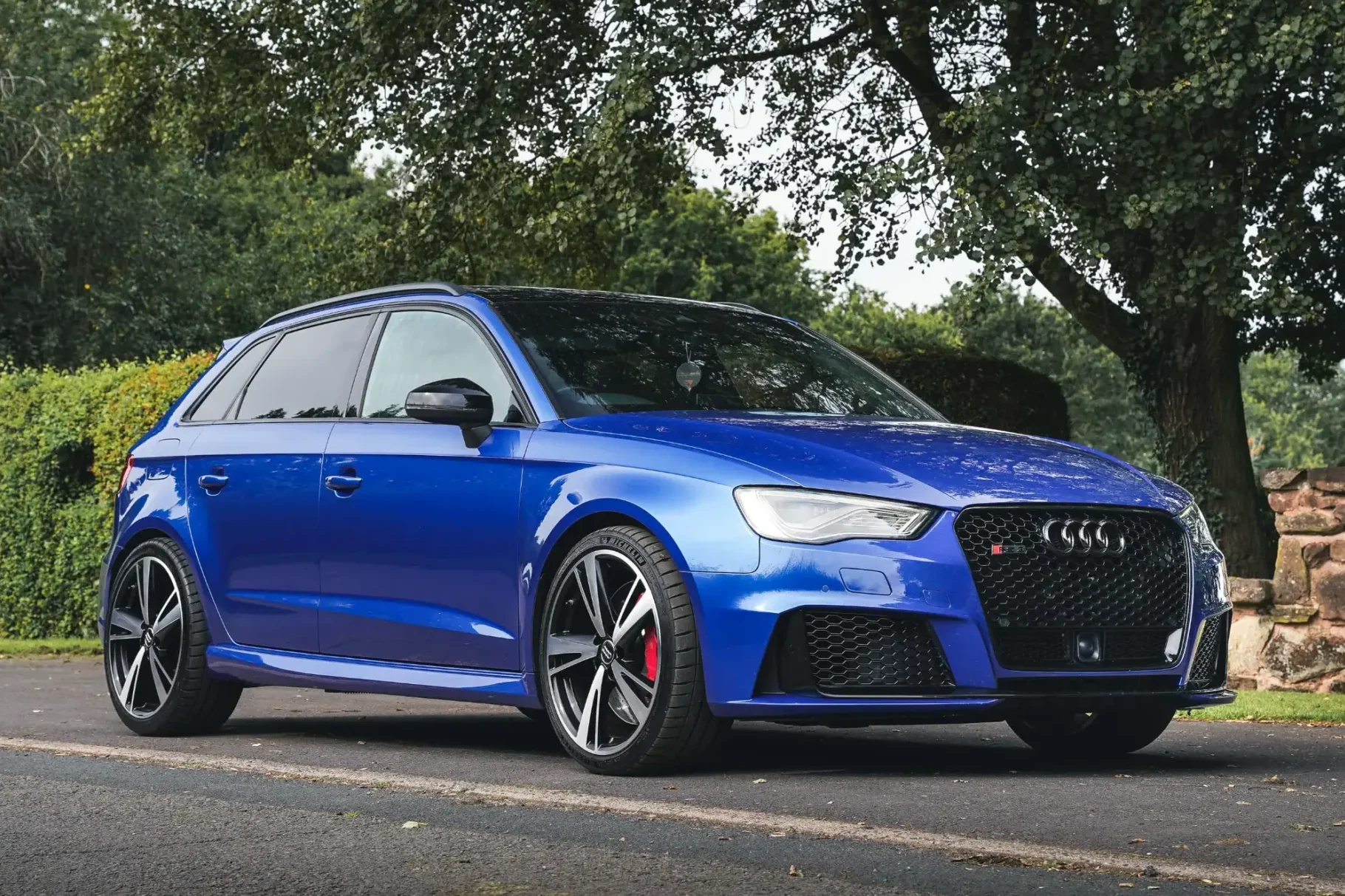
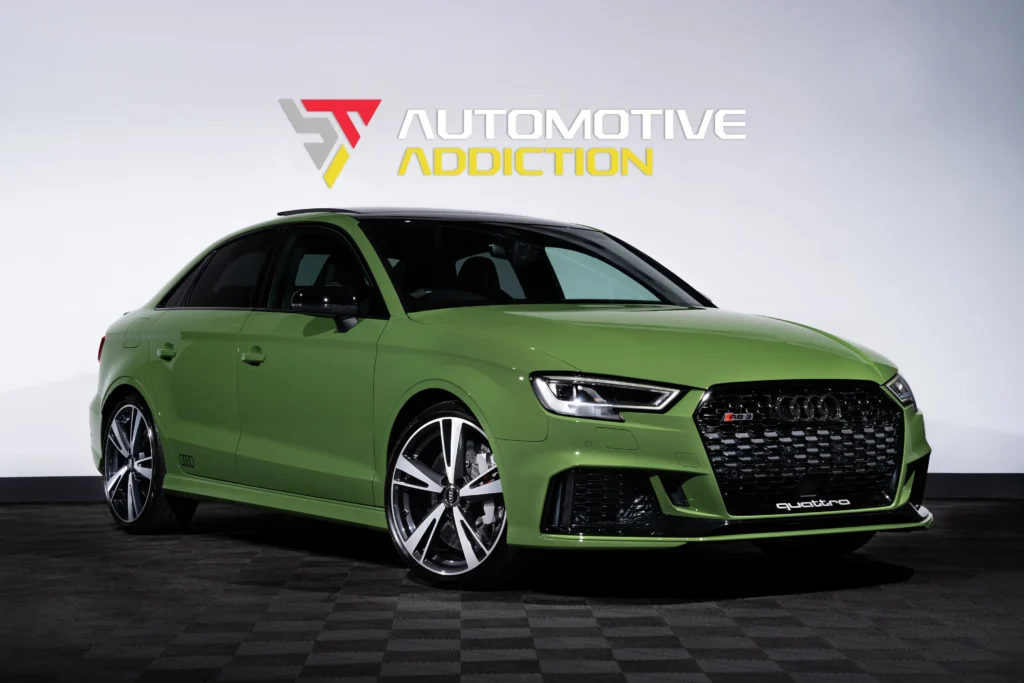
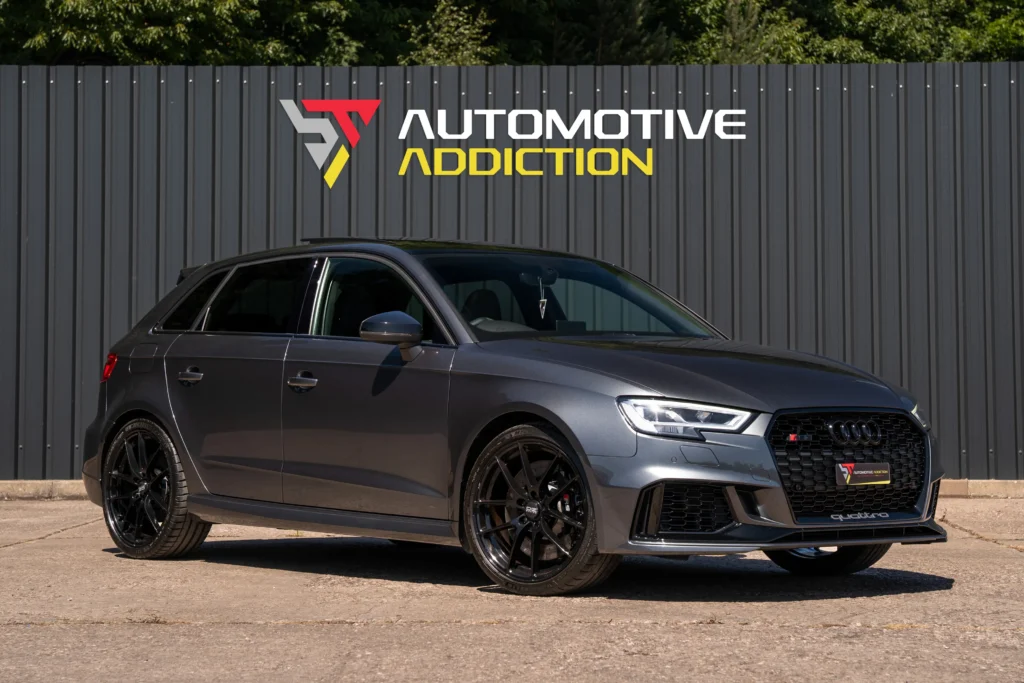

Get one of your own!
- Highest Spec RS Models
- Standard & Modified
- Meticulously Detailed
Audi RS3 8V.1 Pre-Facelift (2015–2016)
The first RS3 8V launched in Sportback (hatchback) form and came with 362bhp and 465Nm of torque from the original 2.5-litre engine (code CEPA-derived). It featured a 7-speed dual-clutch S tronic gearbox and a Haldex-based Quattro system. Despite its performance, some enthusiasts criticized this version for understeer at the limit (often attributed to its heavy cast iron engine block) and a slightly muted driving experience. However, it established the RS3 as the fastest accelerating car in its class and set a new standard for compact performance.
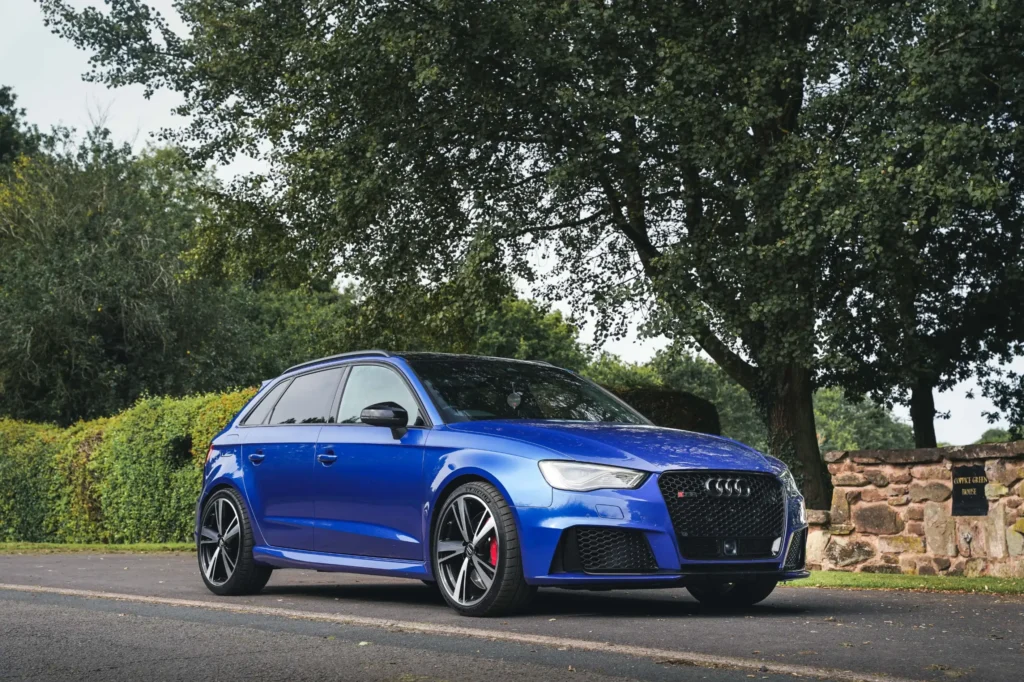
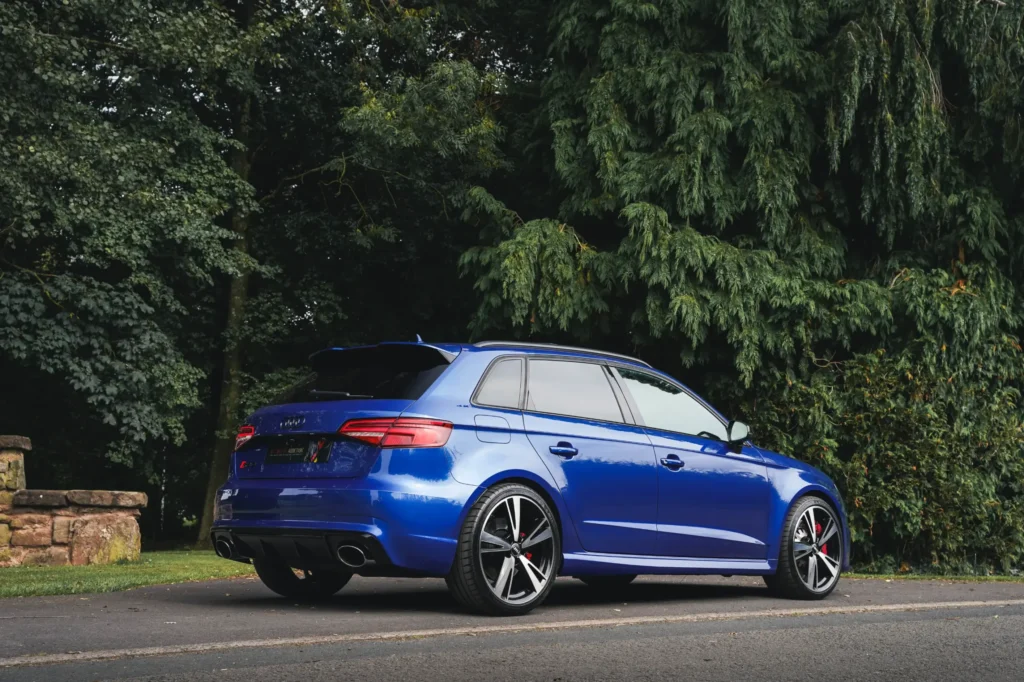
Audi RS3 8V.2 Facelift (2017–2019)
Audi significantly revised the RS3 for the 2017 model year. Power increased to 394bhp and 480Nm thanks to the all-new aluminium-block EA855 evo engine (code DAZA), which was lighter and more responsive. The facelift also introduced improved handling (in part due to the DAZA engine being 26kg lighter), added more aggressive styling, a fully digital Virtual Cockpit dash display, and a wider track at the front for better dynamics. It was also the first time the RS3 was offered as a saloon, a move that expanded its global appeal, particularly in the U.S. market, but also here in the UK, where the saloon shape was a real looker.
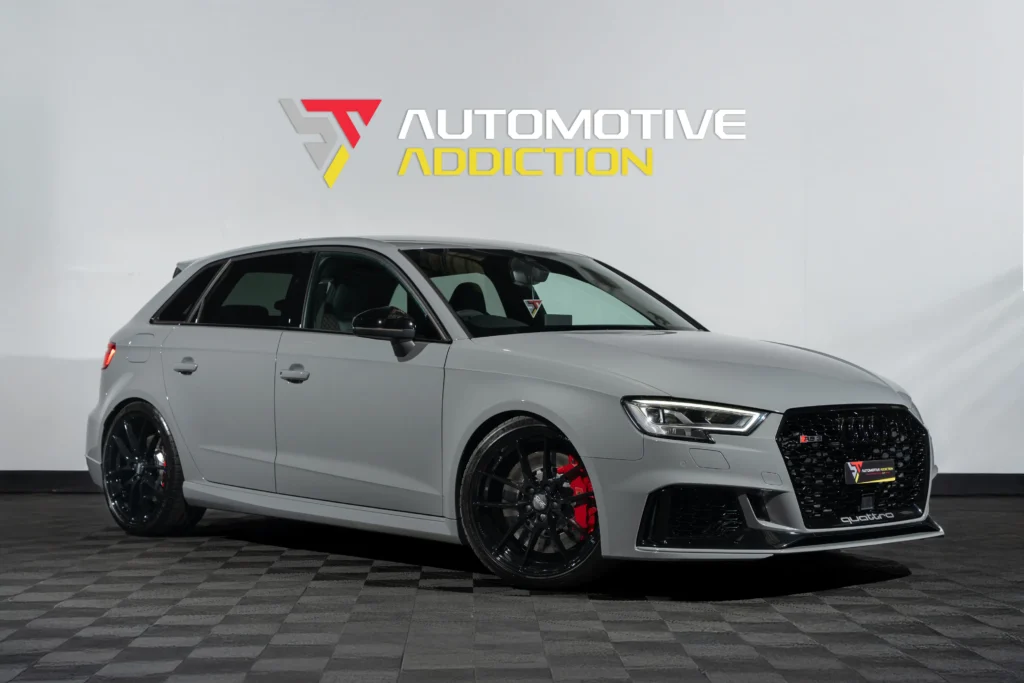
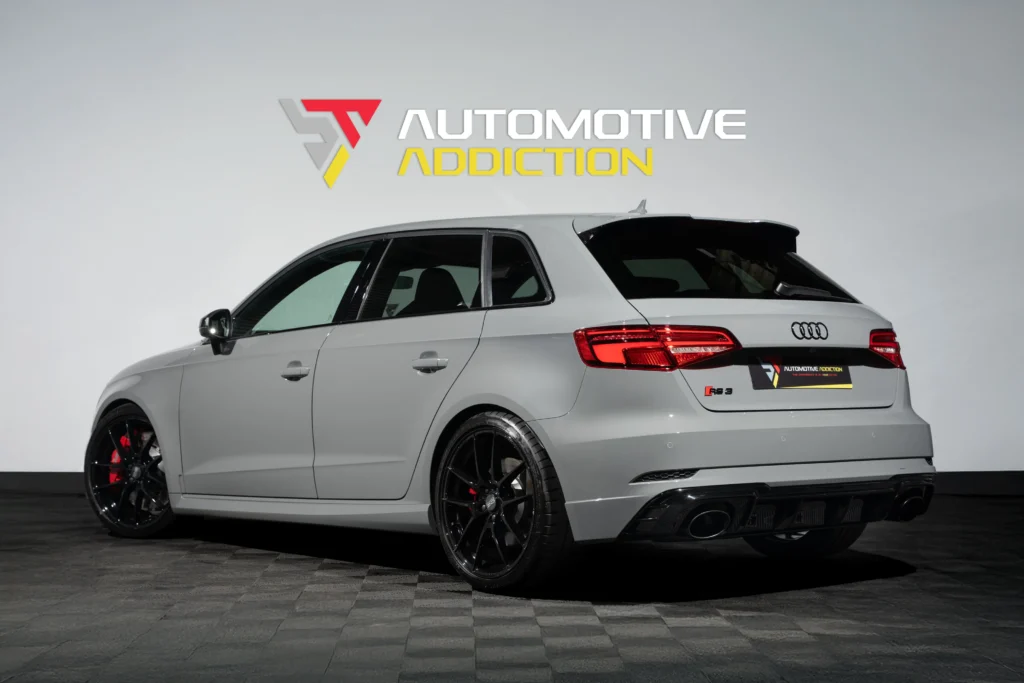
Audi RS3 DNWA Engine (2019–2020)
The final evolution of the RS3 8V came with the DNWA engine code, a revision of the DAZA that met stricter emissions standards as imposed by the Worldwide harmonised Light vehicle Test Procedure (WLTP) regulations. To meet these tighter standards, the exhaust was fitted with OPF/GPF particulate filters. These reduced emissions while keeping performance figures largely the same, but dulled the iconic engine sound. This version marked the end of the 8V era before the arrival of the 8Y generation in 2022.
The RS3 8V is more than just a fast compact car – it’s a symbol of Audi’s ability to blend motorsport DNA with daily usability. Whether in its early pre-facelift form, the more refined and powerful facelift version, or the emissions-conscious DNWA variant, the RS3 8V remains a benchmark for performance enthusiasts. Its combination of a unique engine, Quattro traction, and sophisticated design ensures its place as one of the most iconic compact performance cars of the modern era.

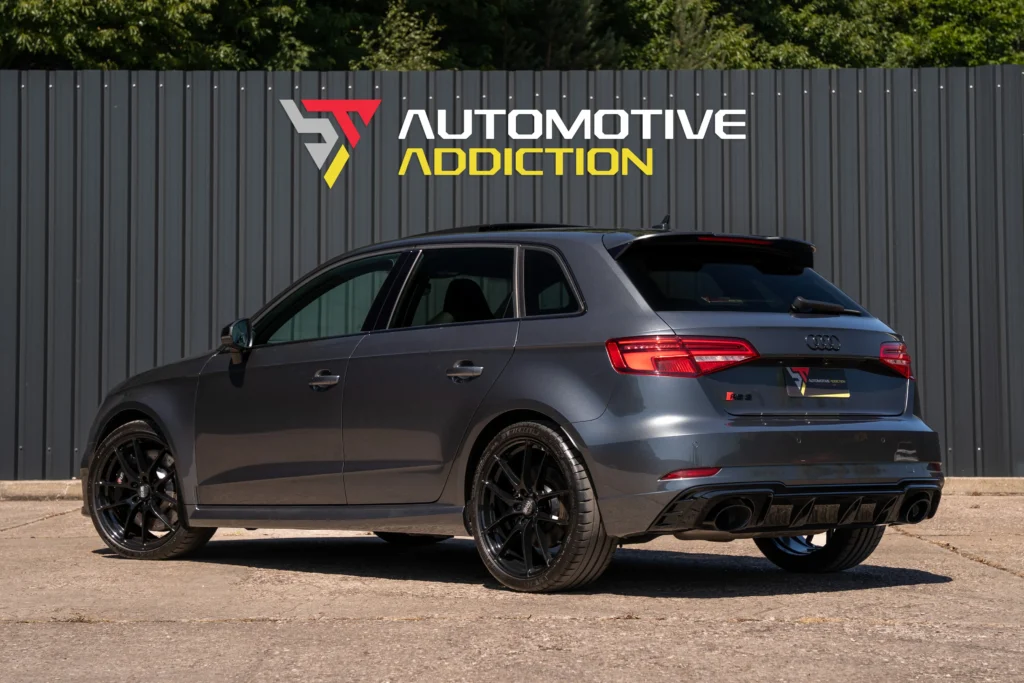
Having sold countless Audi RS3s since the model was introduced in 2015, Automotive Addiction has grown to become one of the country’s leading RS3 specialists, including acting as a moderator on the Audi RS owners club Facebook group.
We’re passionate about this model, with the 8V.2 model being one of the most popular cars we sell. This is largely due to the facelift model being the real sweet spot in the range, packing the lightweight and potent sounding DAZA engine and sharper looks. With that in mind, we decided to give you the lowdown on the vast array of factory options that are available for the car, highlighting the must-have upgrades that will transform your driving and ownership experience, so you can seek these out when buying your next RS3 8V.2
Watch our in-depth guide into the RS3 power-plants:
Audi Sportback Or Saloon
For starters, there is a choice of body style for your RS3, with either a Sportback or Saloon models to choose from. When new, the Saloon commanded a £950 premium over the Sportback, with prices starting at £45,675 compared to £44,725 for base cars before options.
Both body styles drive very similar, with the differences more down to personal aesthetics or loading requirements rather than any noticeable performance edge.
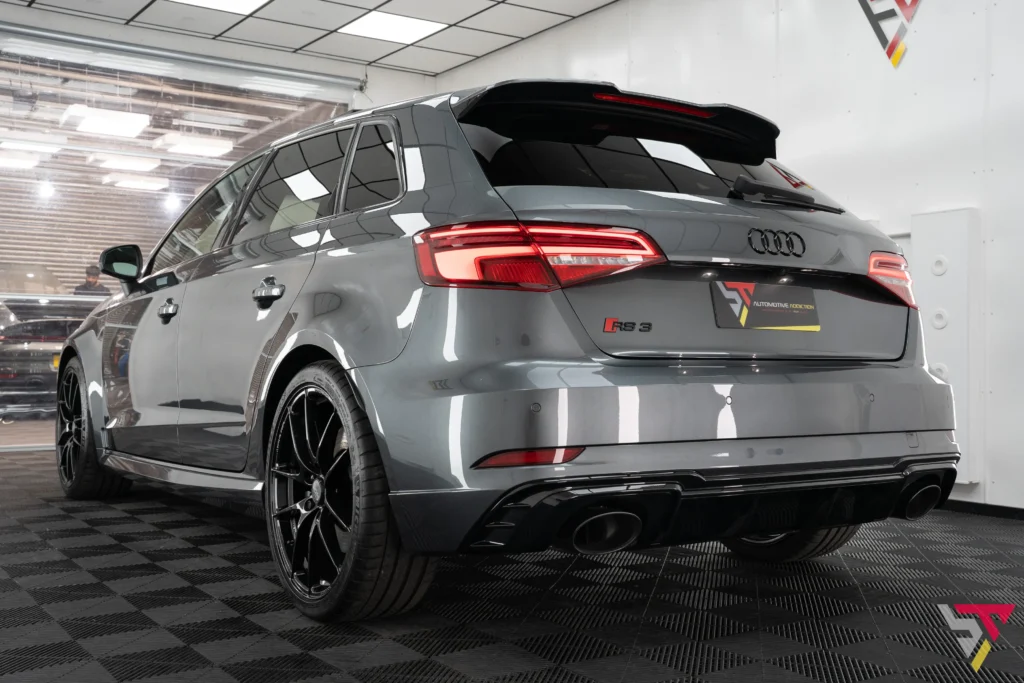
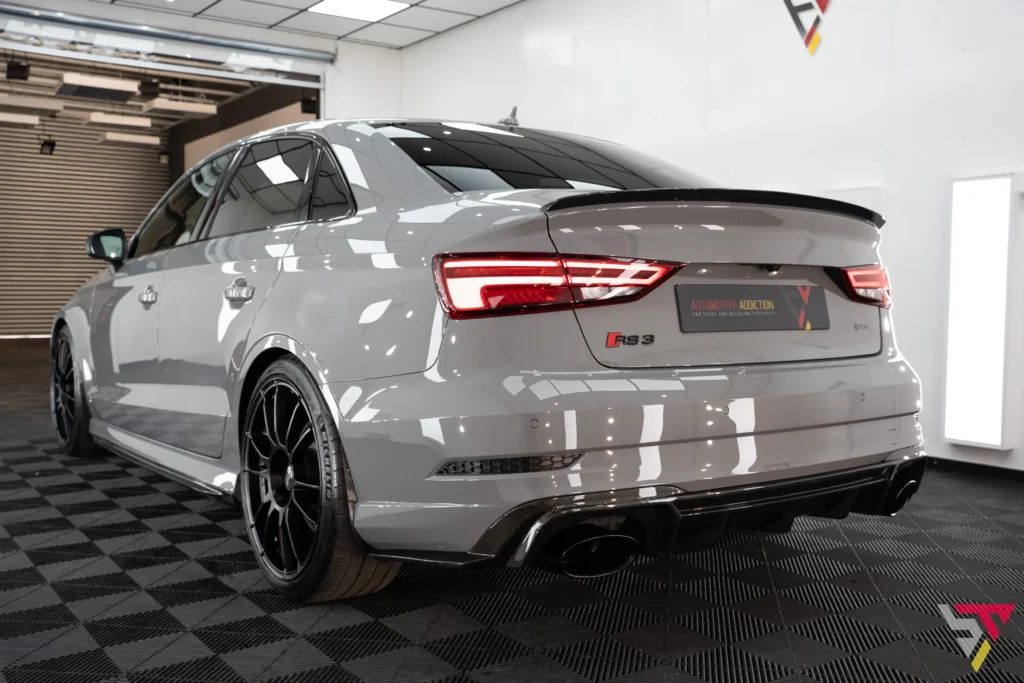
Brakes
As standard, the 8V.2 came with highly effective steel discs and black eight-piston calipers. Red calipers were offered as a £325 option, while to swap the front setup to carbon ceramic discs and special grey calipers (equipped with unique high performance and temperature pistons and seals) and carbon ceramic specific compound pads, was £4,695. This was only an option on DAZA cars as it was discontinued as an upgrade from 2019 onwards.
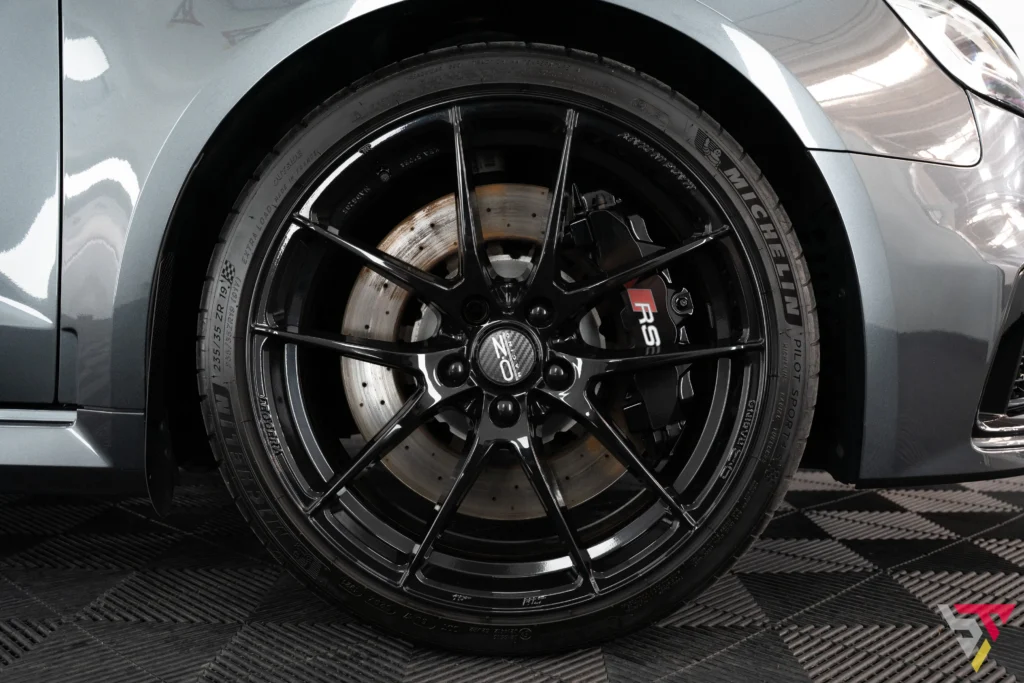
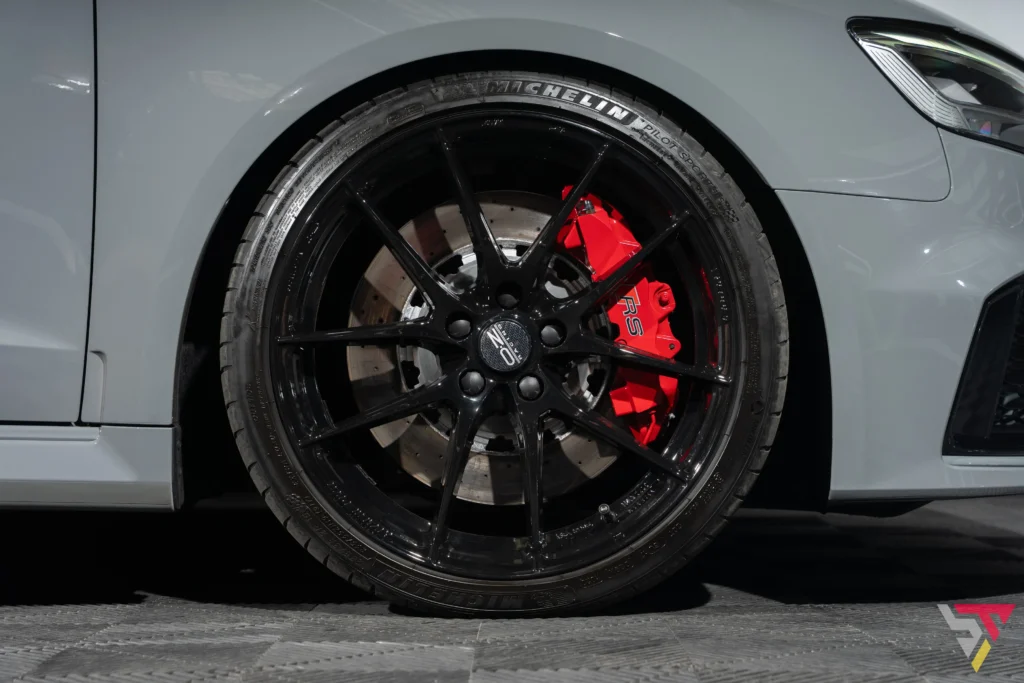
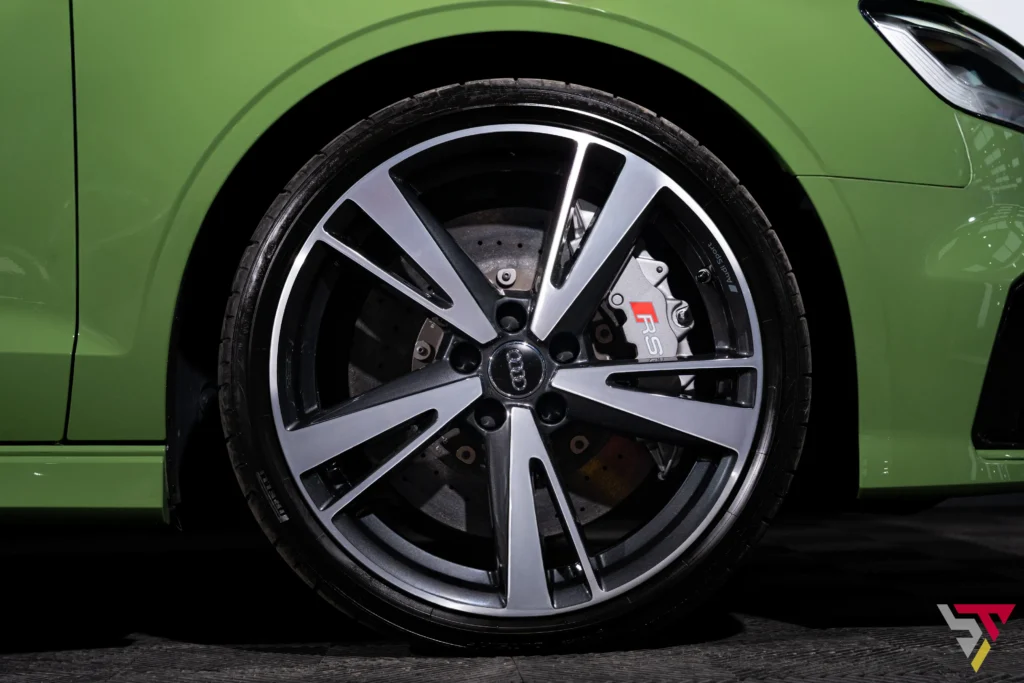
Audi Paintwork Colour Palette
The 8V.2 came as standard in iconic Nardo grey paint, but there was also a range of optional colours that came at a price. These included Glacier White, Mythos Black Metallic, Daytona Grey Pearlescent and Catalunya Red Metallic for £550, or Panther Black Crystal or Ara Blue Crystal for £775. If these hues weren’t radical enough, there was also the chance to specify the 8V.2 with a custom Audi Exclusive colour. This was a £2400 option and could increase the delivery time for a new car by up to two years.
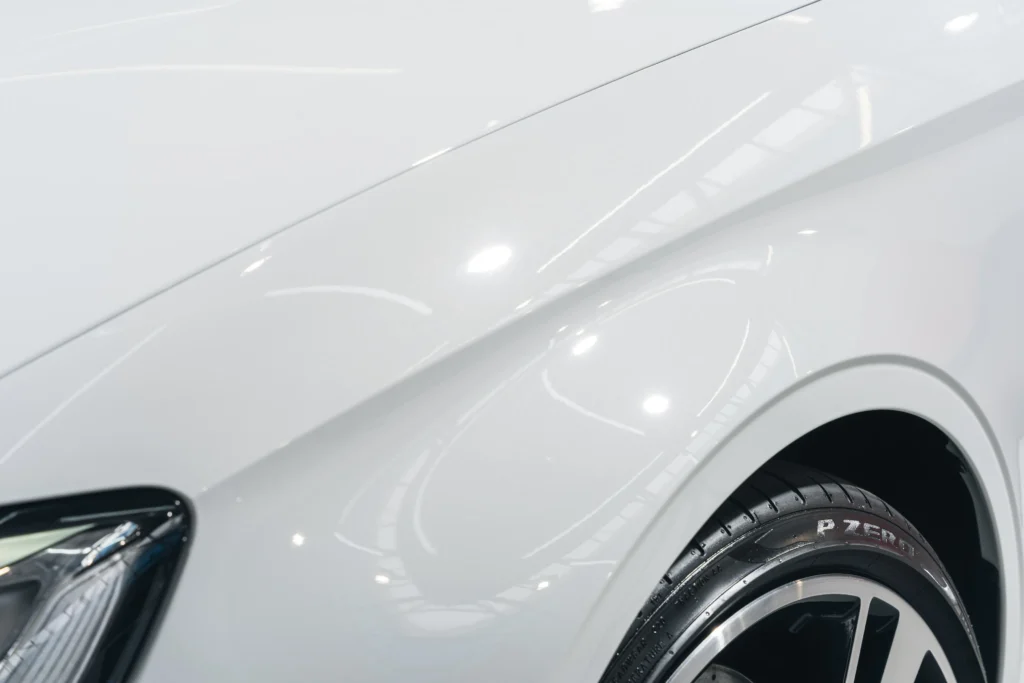
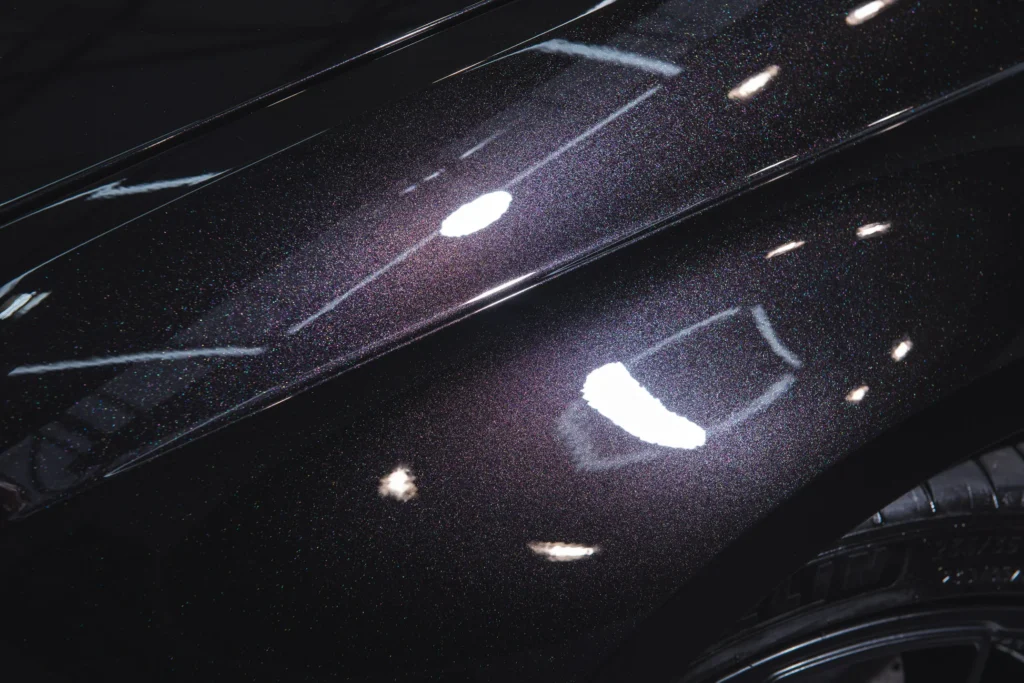
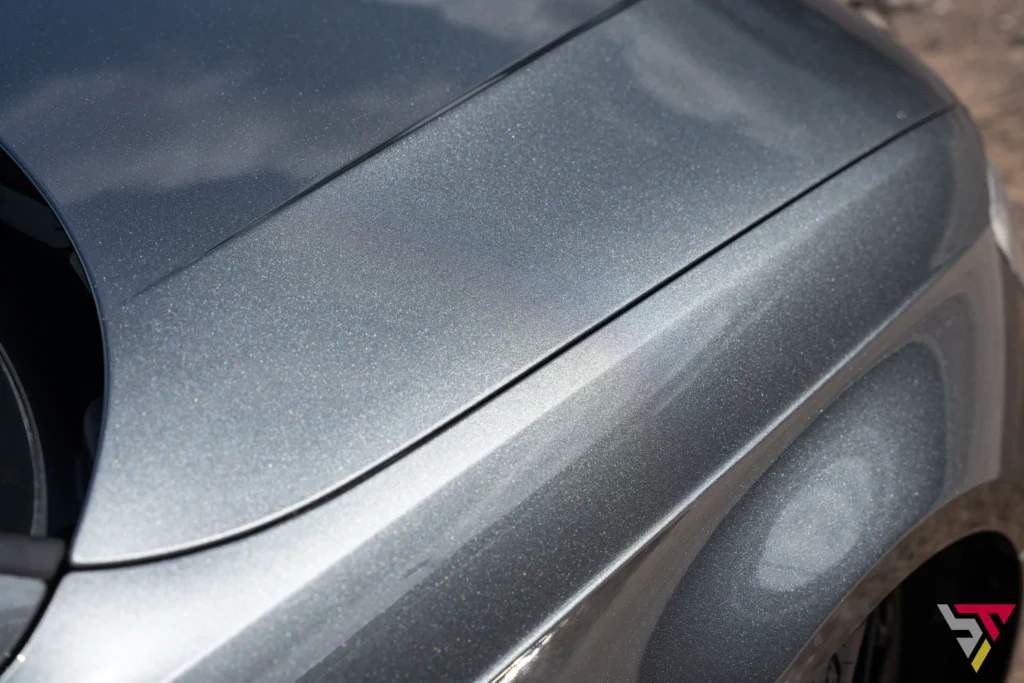
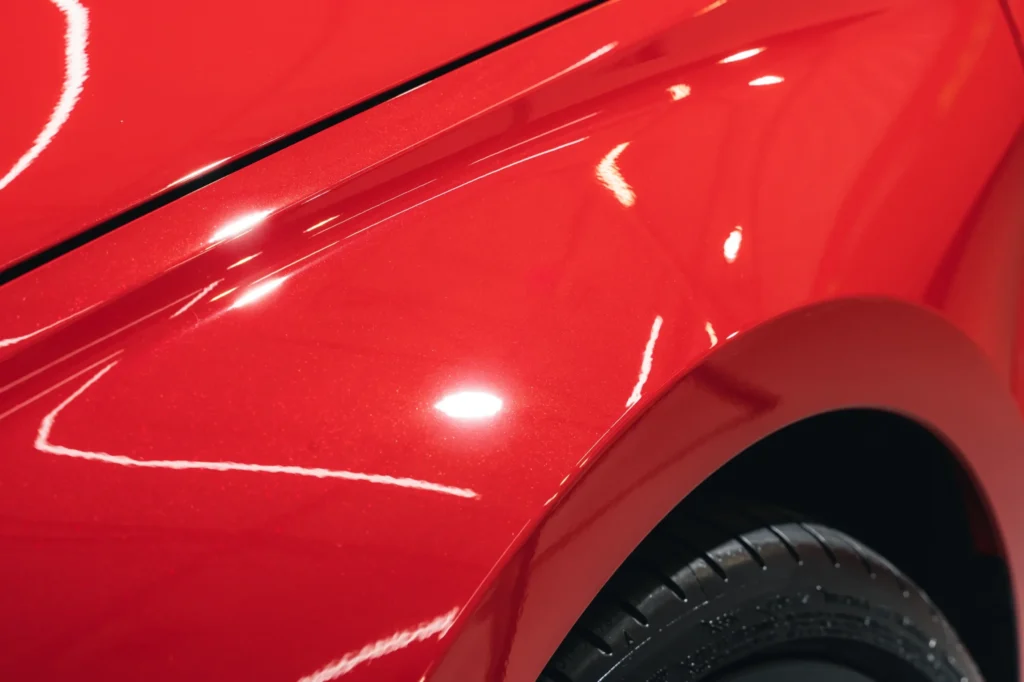

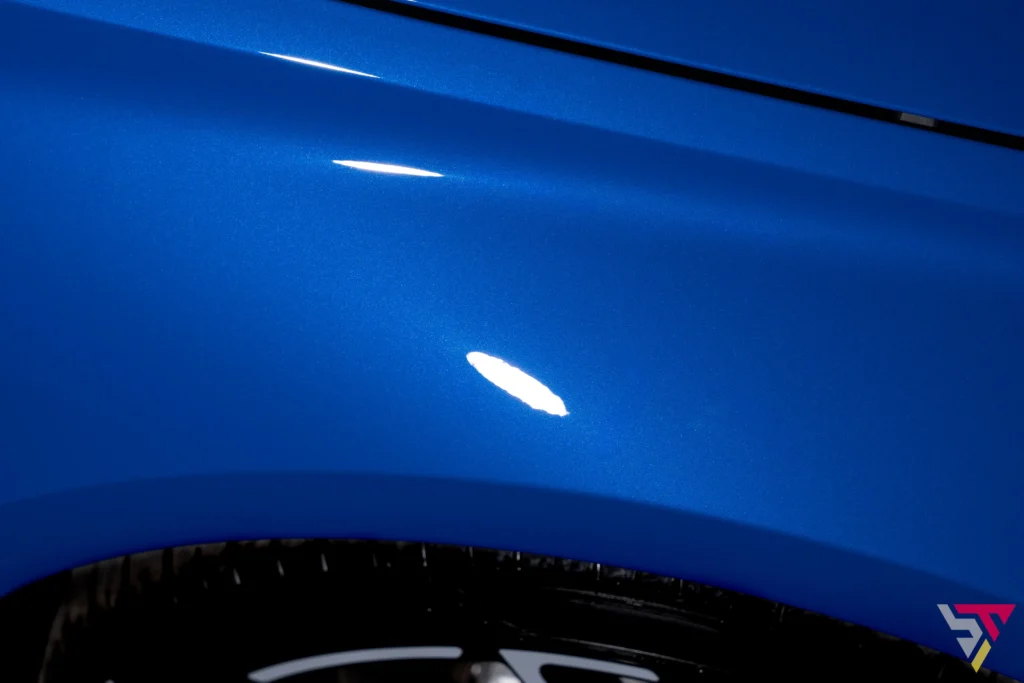
Exhaust Systems
One of the most popular upgrades for the RS3 is to swap the standard exhaust system for the RS Sports exhaust. Costing £1,000, this features black tailpipes and an extra link pipe to increase flow and noise when the valves are open and is considered to be the very best sounding and performing exhaust upgrade for the RS3, even over aftermarket options.
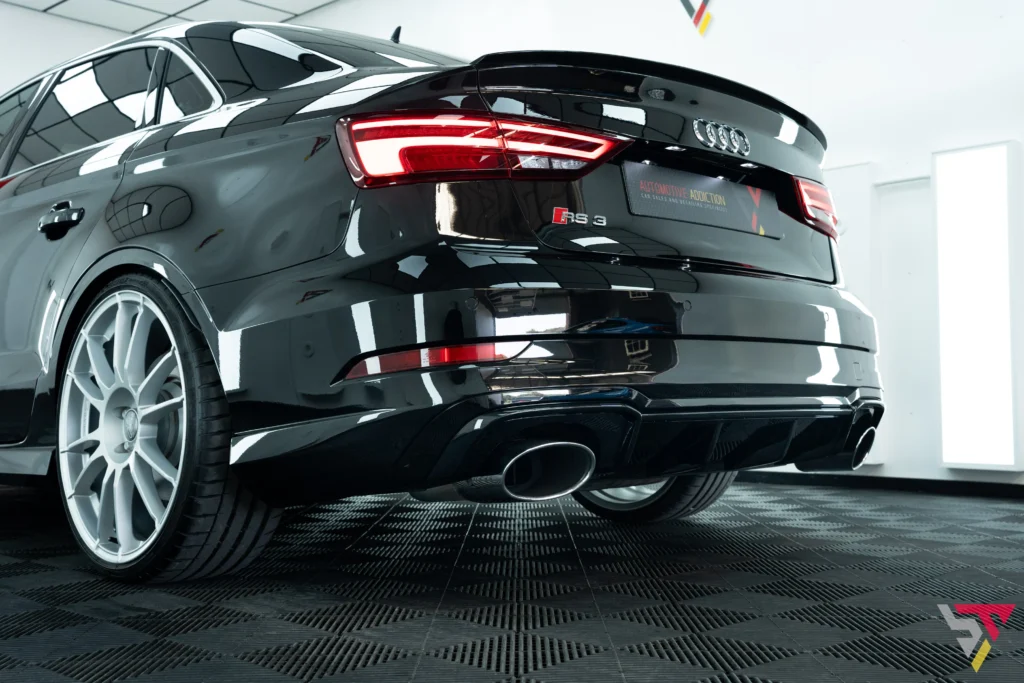

Engine Upgrades
Carbon-fibre engine covers for the engine top and inlet manifold were a nice touch and could be selected for an additional £1000. They are also a popular retrofit upgrade.
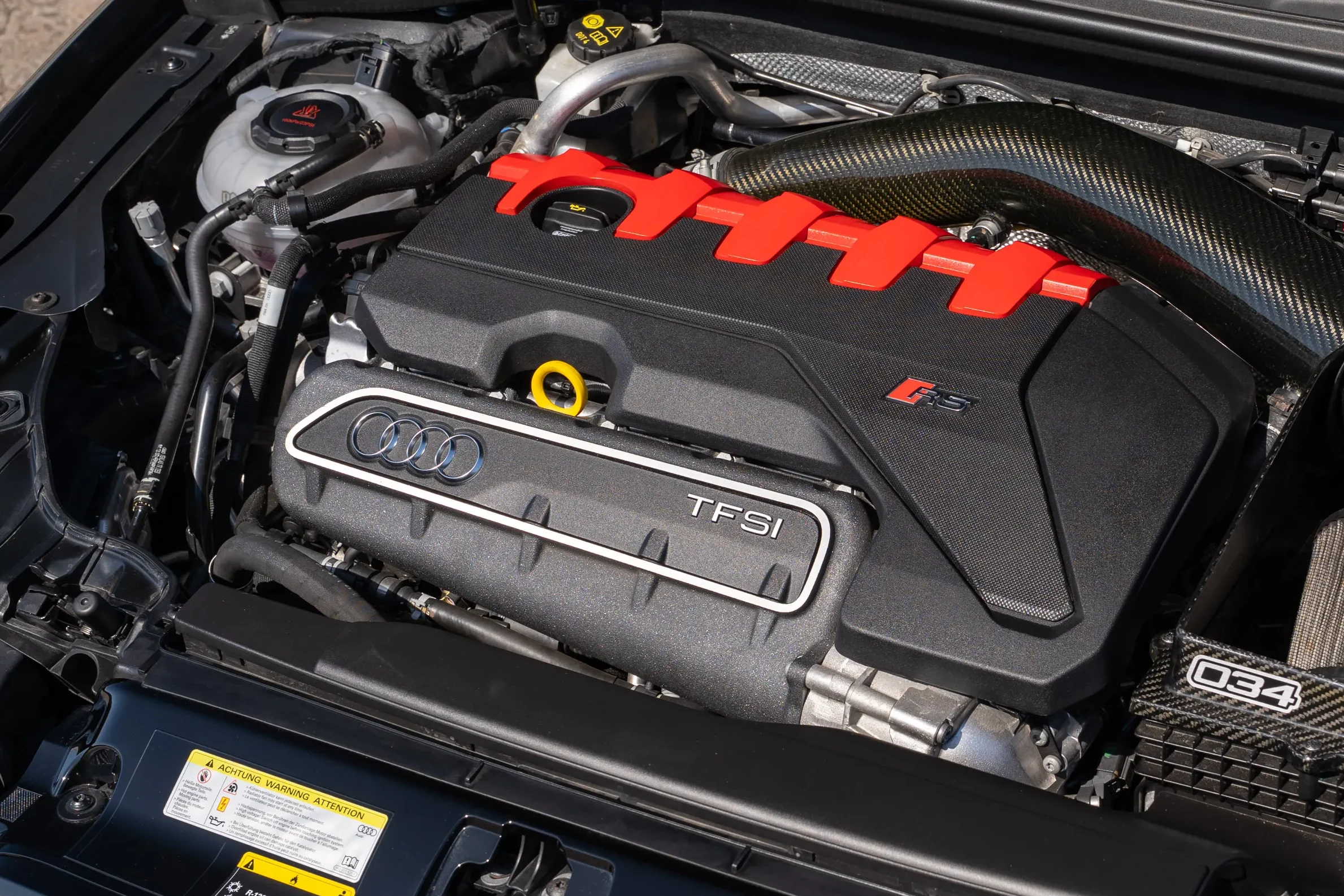
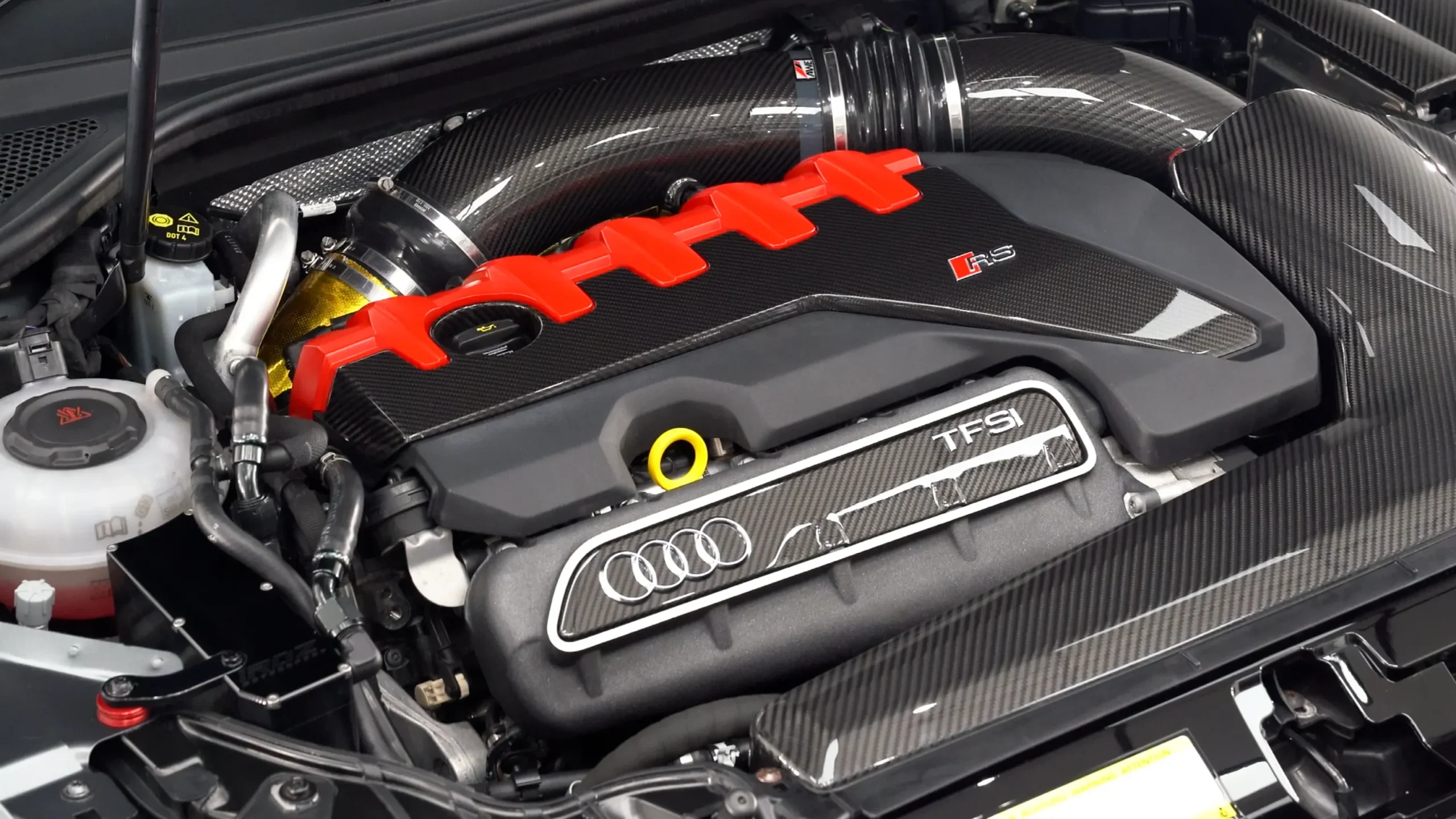
Headlights Options
The 8V.2’s standard headlights are LED items that work well, especially when paired with High Beam Assist, which is a £150 option that dims the lights to avoid dazzling oncoming traffic. An even more sophisticated system could be chosen however, in the form of Matrix LED headlights. These were an £895 option that added sweeping indicators, and advanced matrix beam technology, allowing the LEDs to dip, move, and switch off segments to avoid dazzling oncoming traffic and provide improved lighting performance.
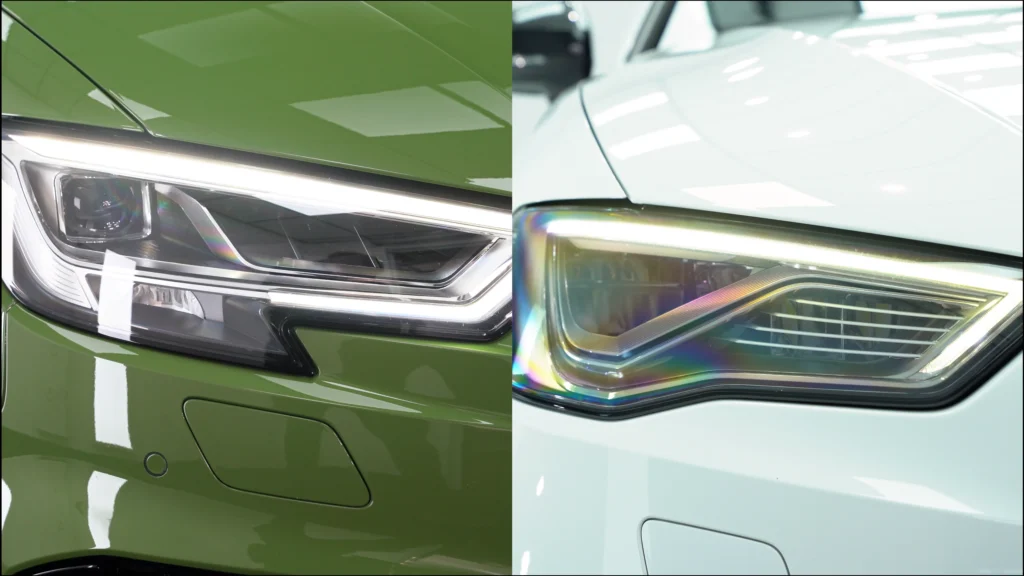
Audi RS3 8V Buyers Guide: Exterior Styling
In base spec, the RS3 8V.2 comes with silver trim for the grille surround, window trims, while the splitter and rear diffuser trim are body colour. Those looking for a more menacing edge, could opt for the £795 Gloss Black Styling Pack, which included the grille surround, window trims, lower splitter, rear diffuser trim and rear spoiler trim. Alternatively, there is also the Matt Aluminium Styling Pack which is the same but in matt aluminium, apart from the spoiler remains colour coded.
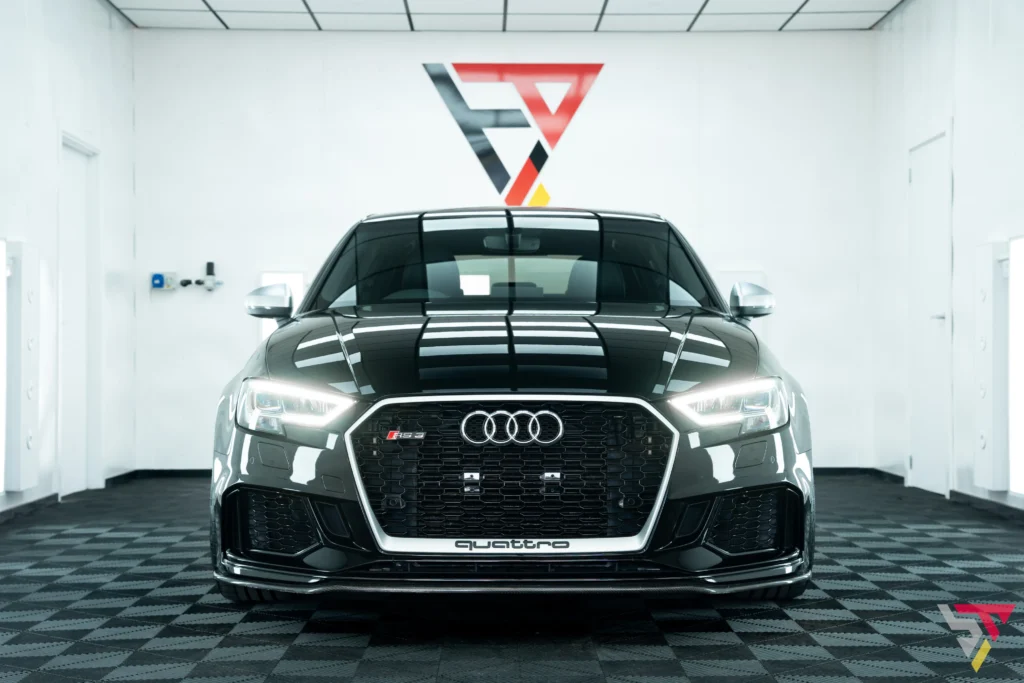
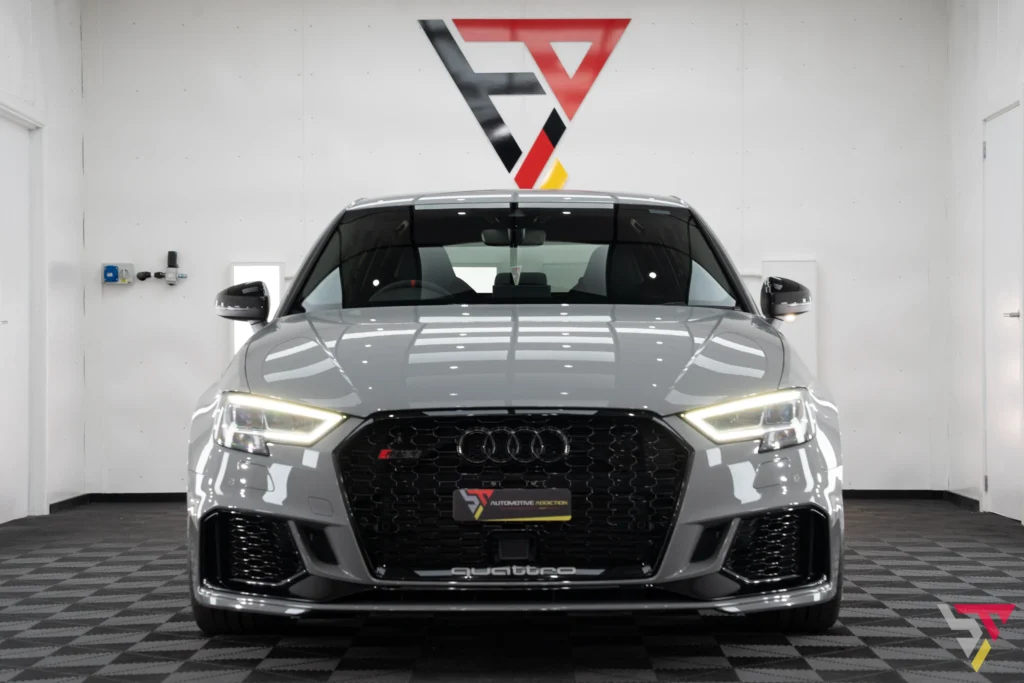
Panoramic Glass Sunroof
For those who preferred a more spacious-looking and airy cabin and to better hear the glorious DAZA engine for £1075 there was a Panoramic Glass Roof option. Thos after pure performance often did not choose this option as it adds around 30kg to the highest point on the car, which can adversely affect handling on the limit.
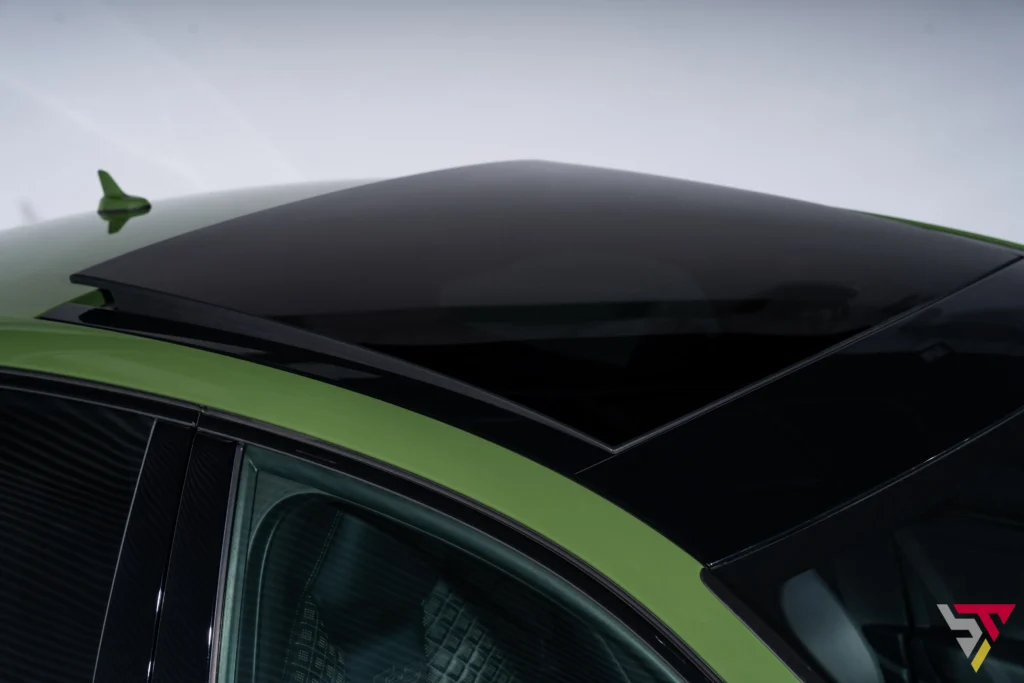
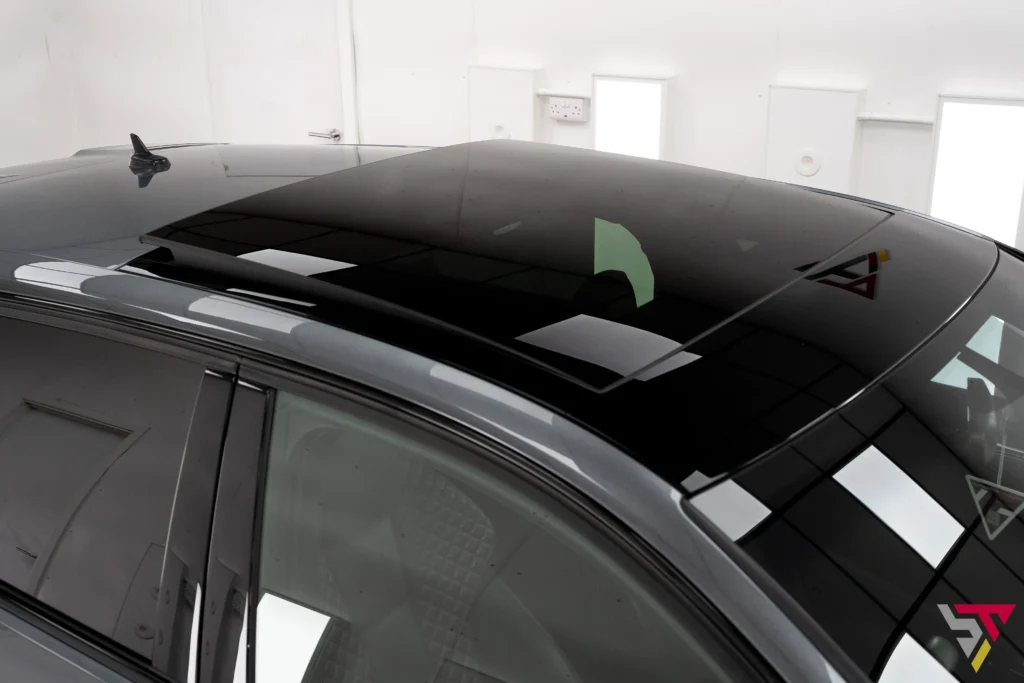
Wheels
The 8V.2 was the first RS3 to offer staggered width wheels with a wider 8.5J wheel at the front with 255-section tyres and 8J at the rear with 235-section tyres. As standard, these were silver five spoke wheels, with Titanium finish a £795 option or an Anthracite and diamond cut design available for £895.
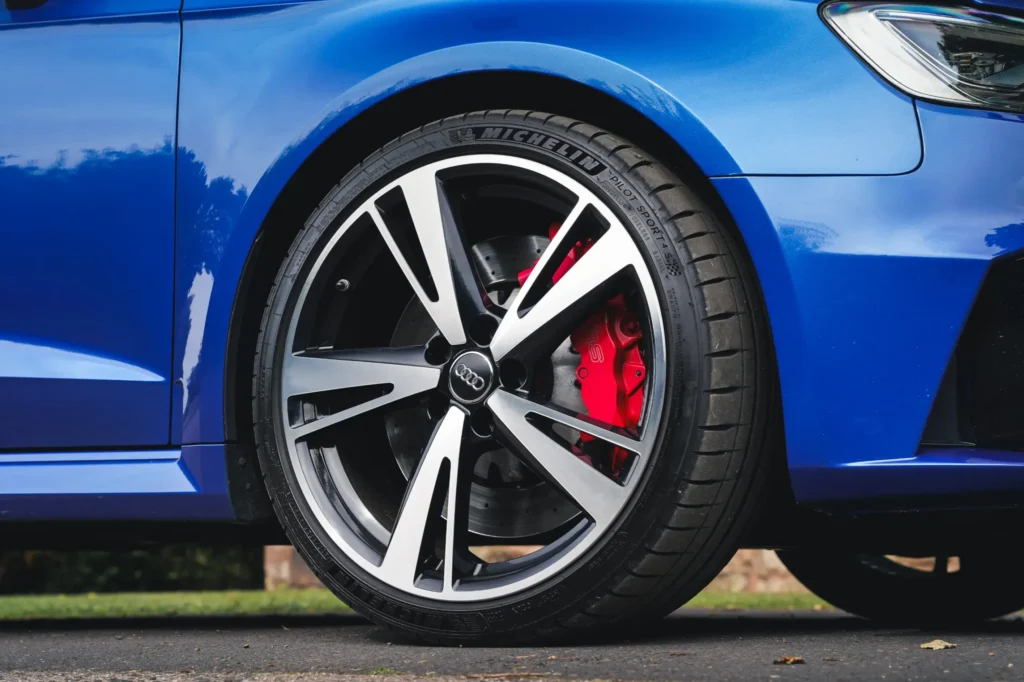
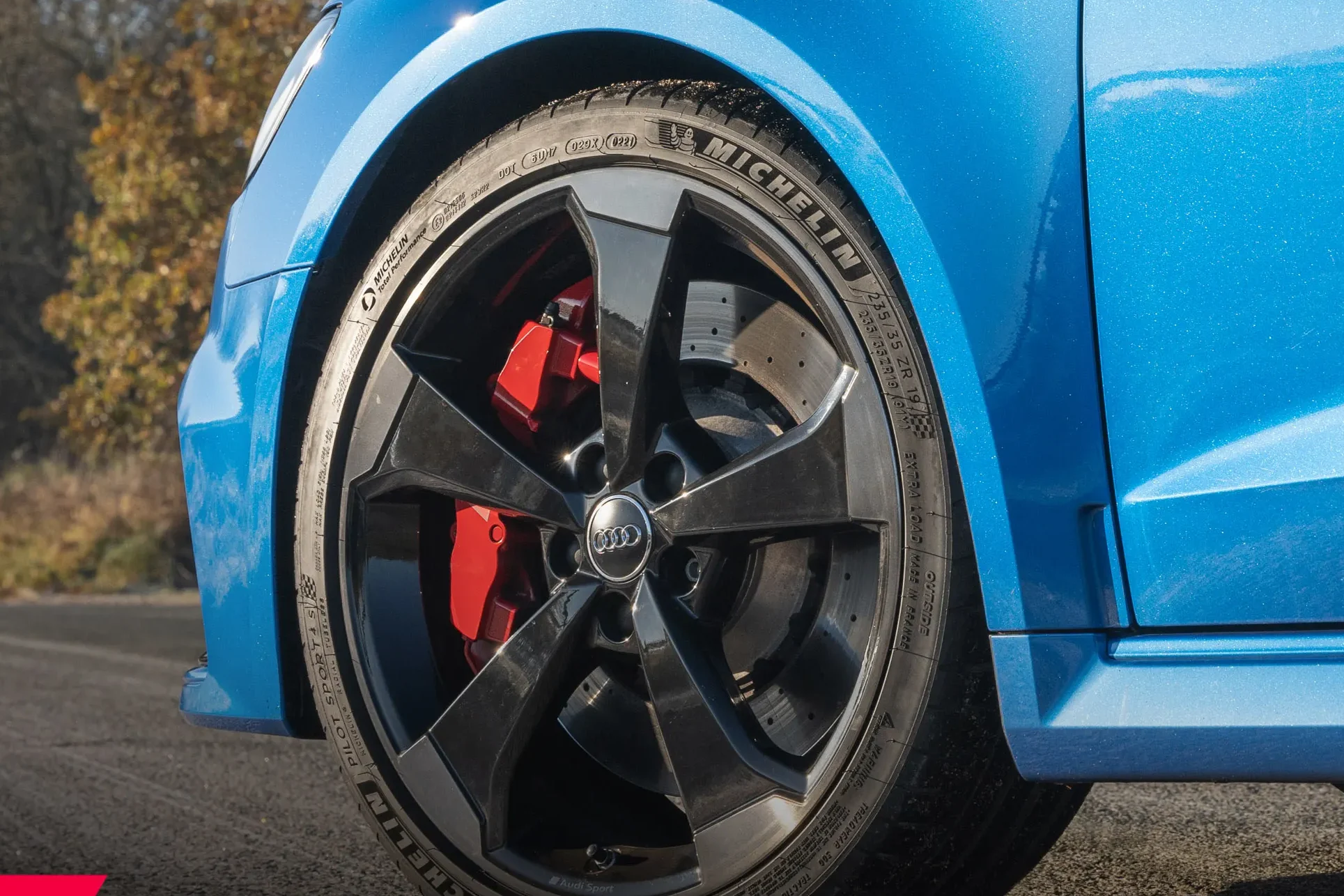
Mirrors Upgrades
Harking back to the early days of the RS brand, the standard mirror caps on the RS3 are matt aluminium, but a gloss black option is offered for £90. Carbon-fibre caps are available, but only as an accessory, not as an option, for £500.
The mirrors on the 8V.2 do not electrically fold as standard, but this, as well as heating can be added for £275, while a dimming feature will add another £100 on top of that.
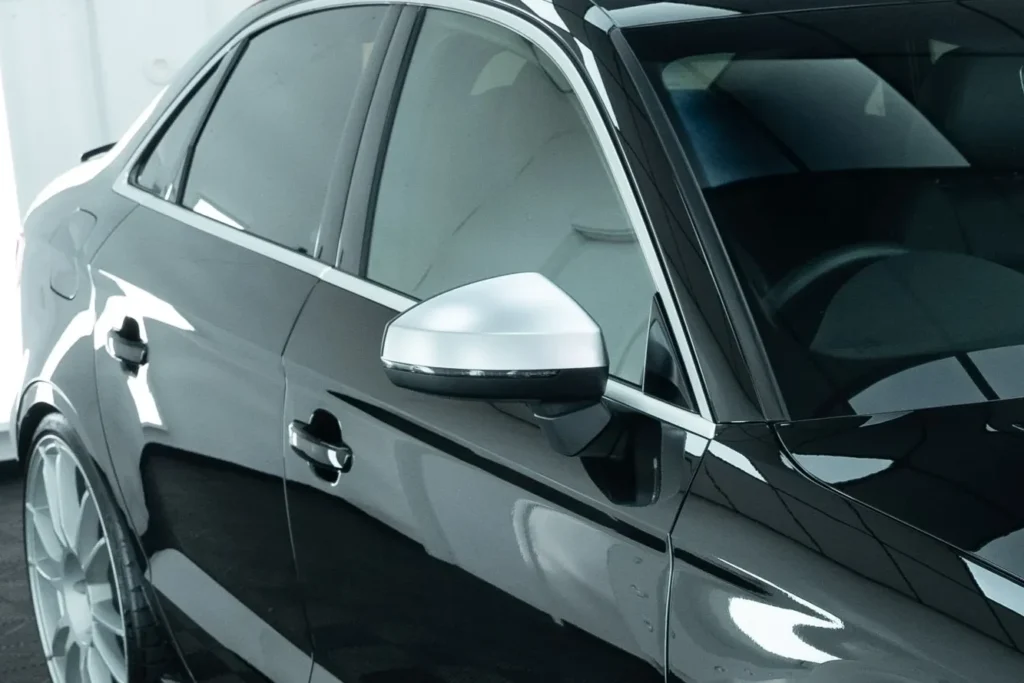
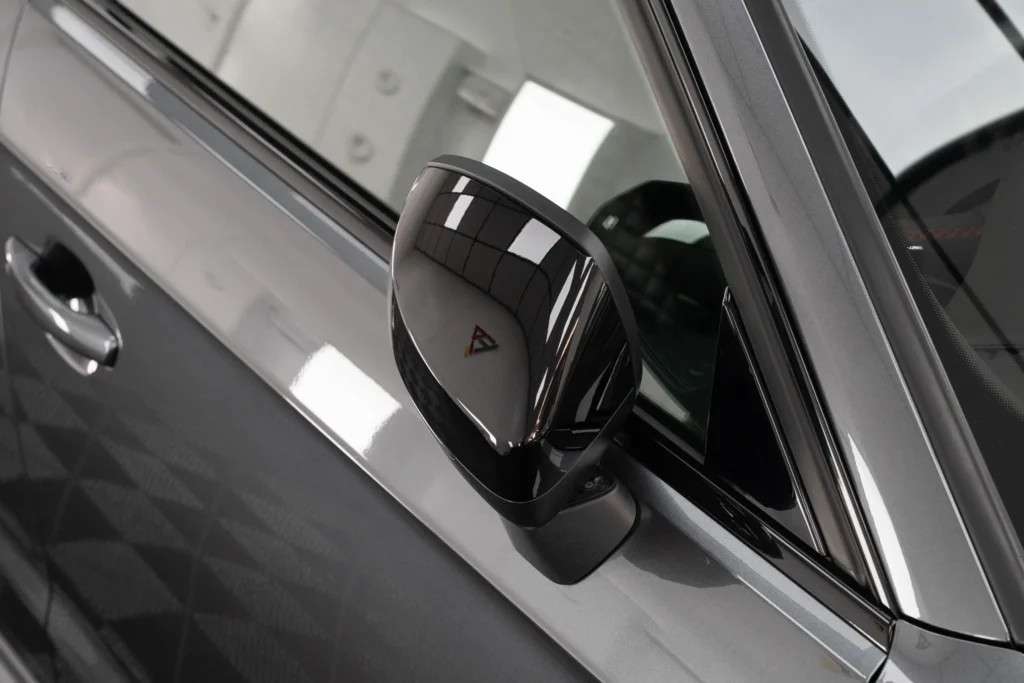
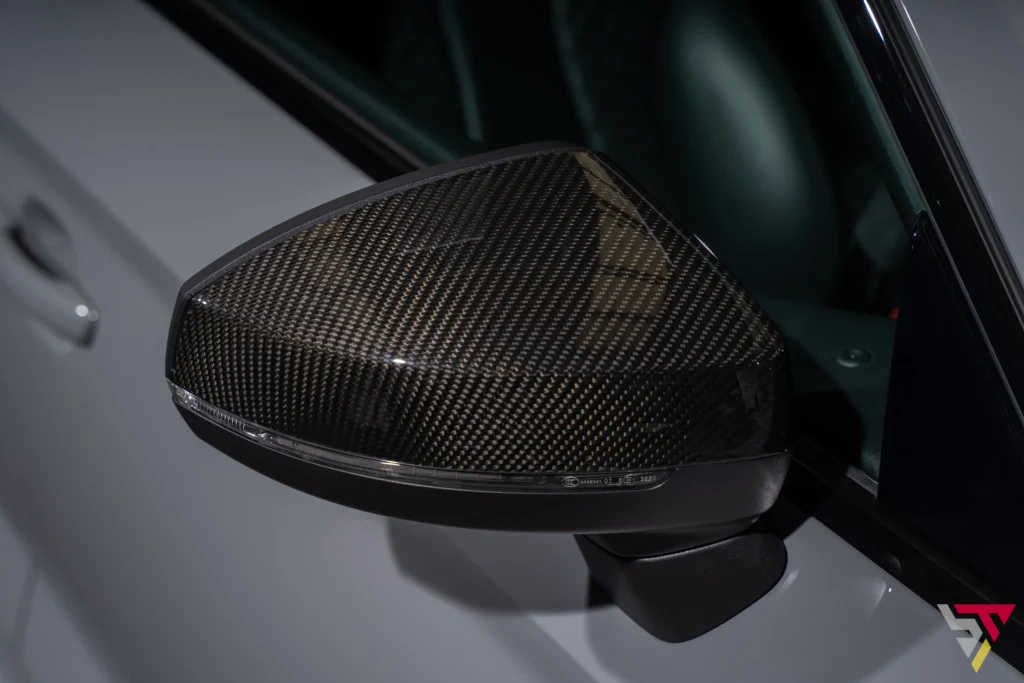
Glass Options
Tinted privacy glass is offered as an option at the rear for £375 and is a very popular upgrade that is found on many RS3s.
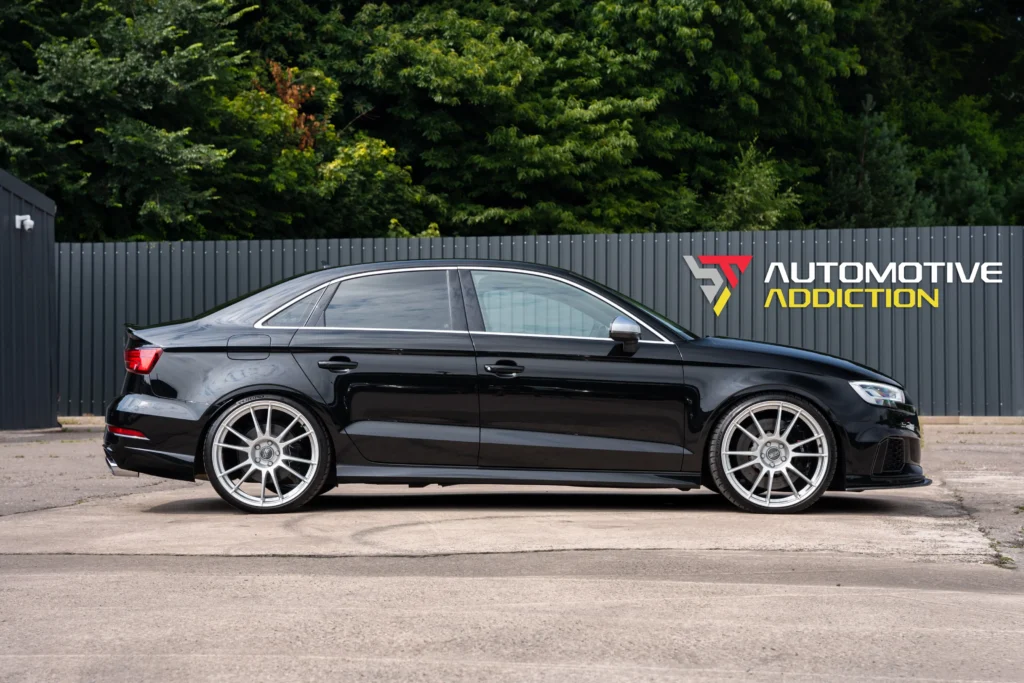
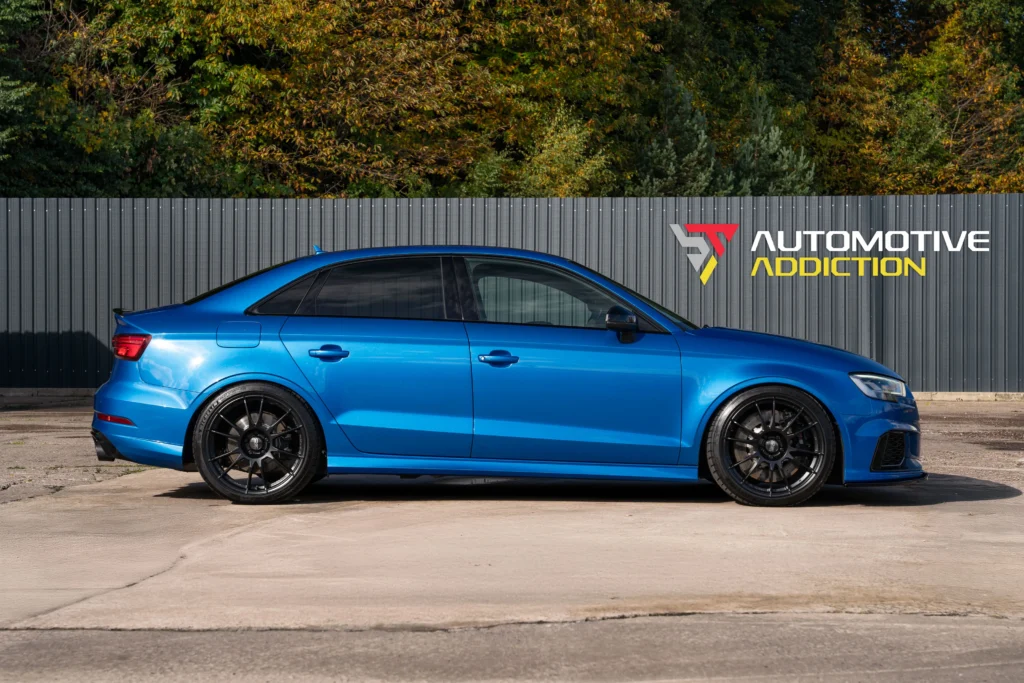
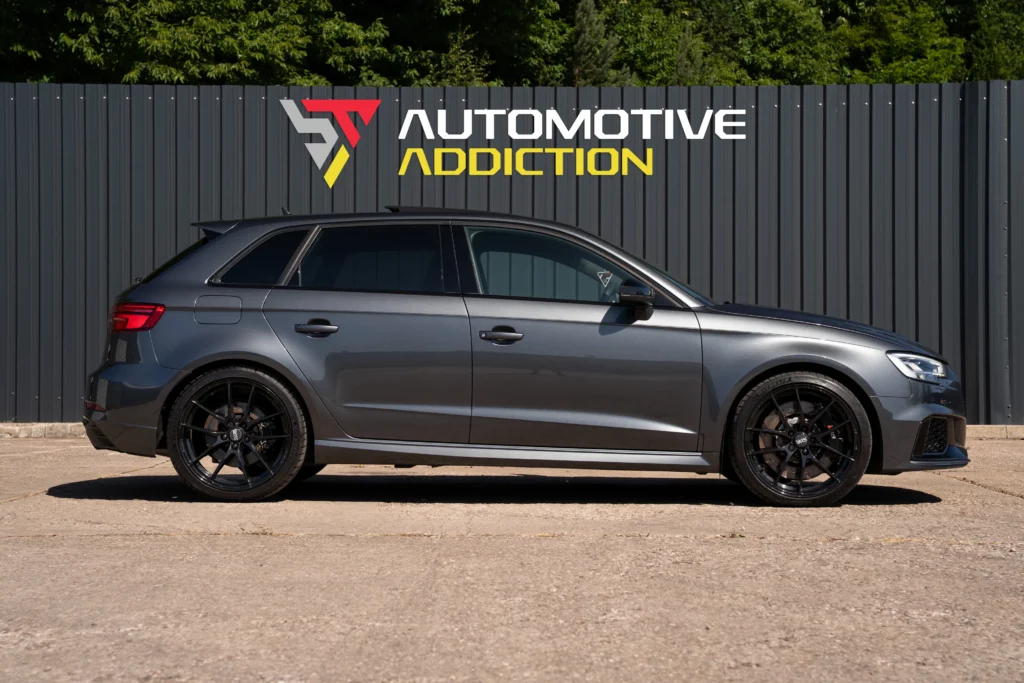
Tyre Pressure Monitoring System
Most modern cars come with a rudimentary tyre pressure monitoring system as standard, but these often only tell you if it believes a tyre is flat or low and the RS3’s standard system is no different. The optional Tyre Pressure Monitoring System however, is much more advanced and uses sensors in the tyre valves to record individual tyre pressures and temperatures which is displayed on the dash. For £250 it is an option that is well worth the outlay.
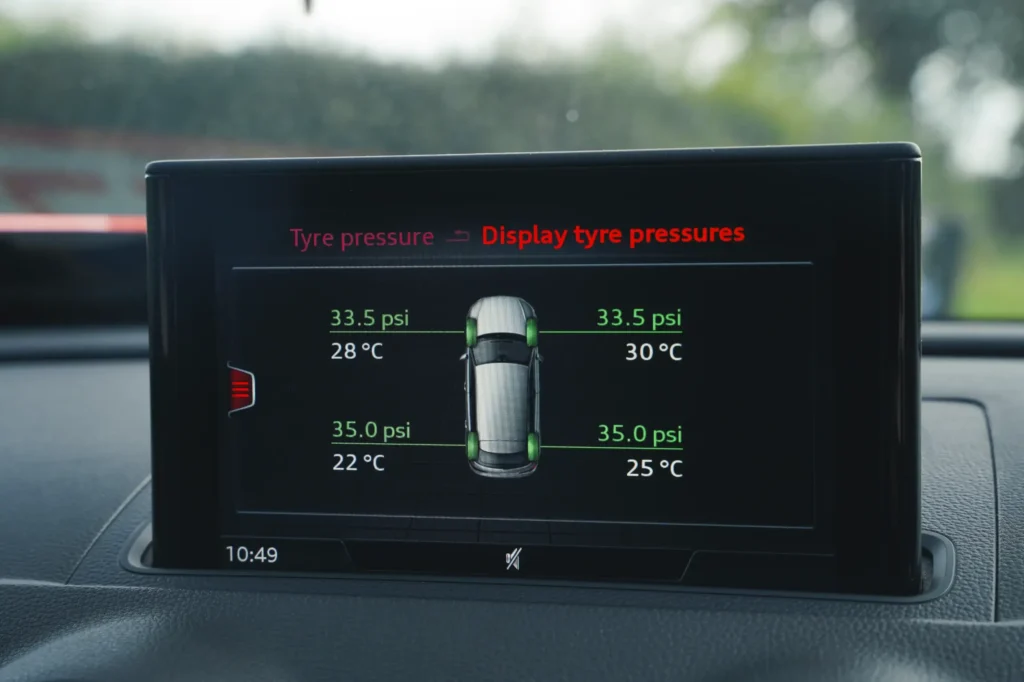
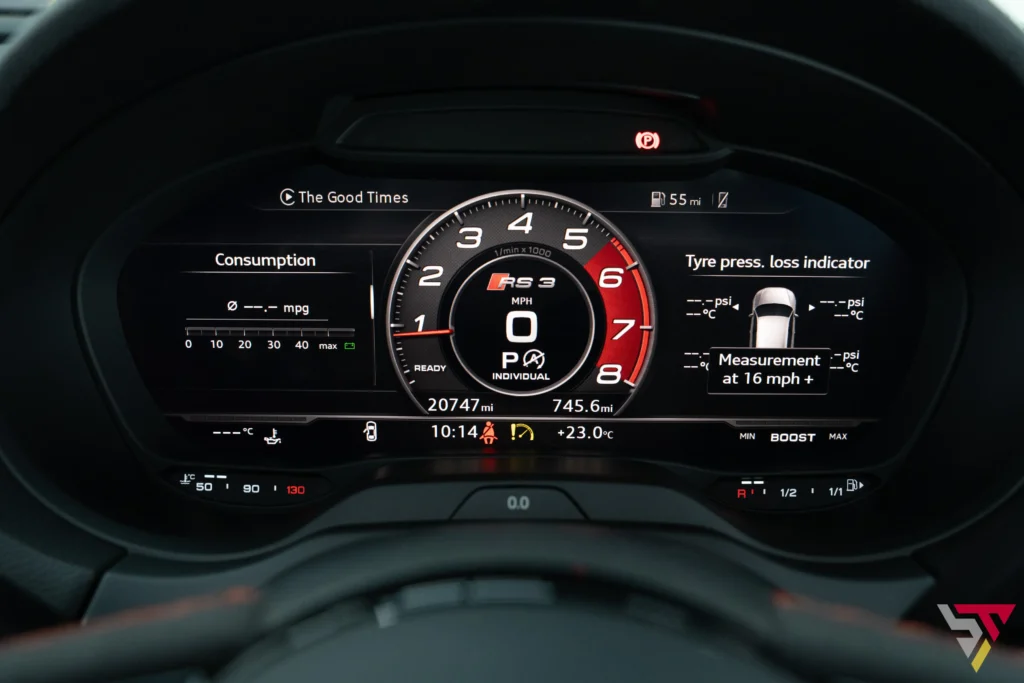
Magnetic Ride Control
Also known as Mag Ride, Magnetic Ride Control was a £1000 option that added dampers which use magnetorheological fluid to instantly adjust the damping characteristics of the suspension in real time. It enhances both ride comfort and handling by automatically responding to road conditions and driving behaviour. It can also be electronically adjusted via controls in the cabin with settings for Comfort, Auto or Dynamic, depending on your ride preference and driving style.
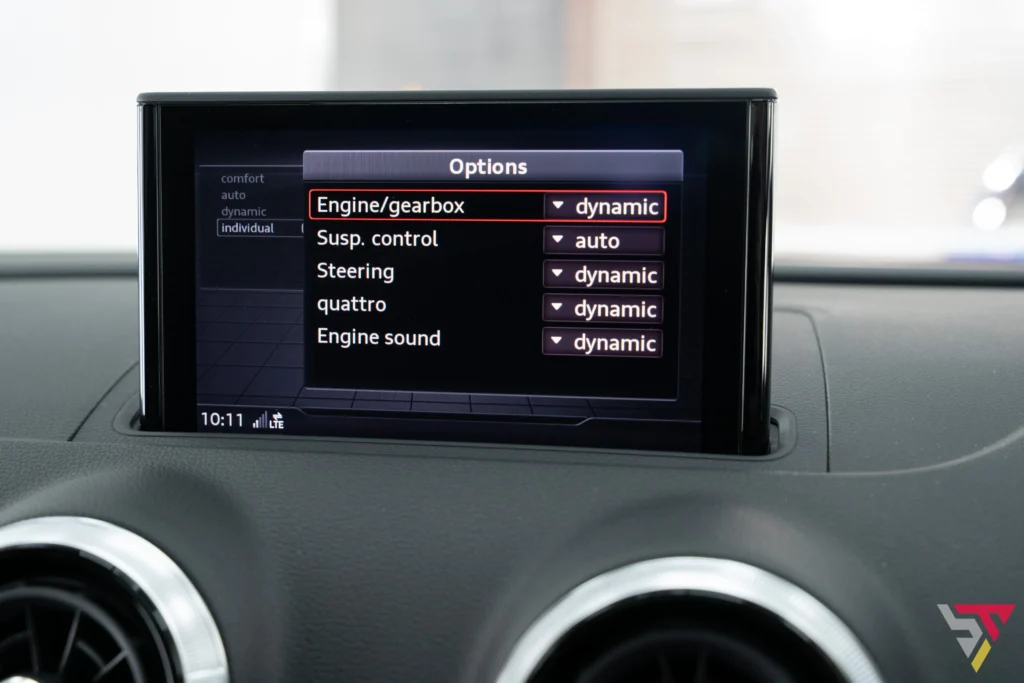
Audi Sport Package
Those considering the upgrade to Magnetic Ride Control would’ve been wise to consider the Audi Sport Pack instead, this is because, not only does it include Mag Ride, but it also adds the RS Sports Exhaust and the advanced Type Pressure Monitoring System as part of the package that cost just £1700, a saving of £550 over buying the parts separately.
Top Speed Increase
Those wanting to explore the RS3’s full speed potential were required to shell out £1600 to have the car’s Top Speed electronically delimited to 174mph. Unless you are planning on using your car on Germany’s unrestricted autobahns or competing in top speed events, this is an upgrade we’d happily sacrifice, as even on a trackday, you are unlikely to be able to reach these speeds anyway.
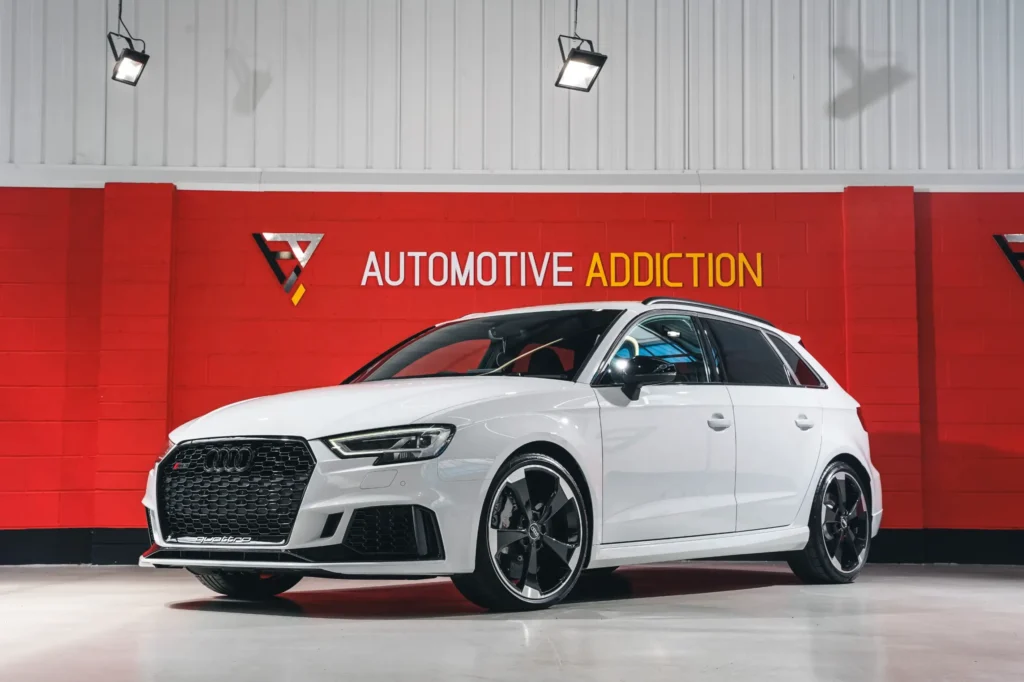
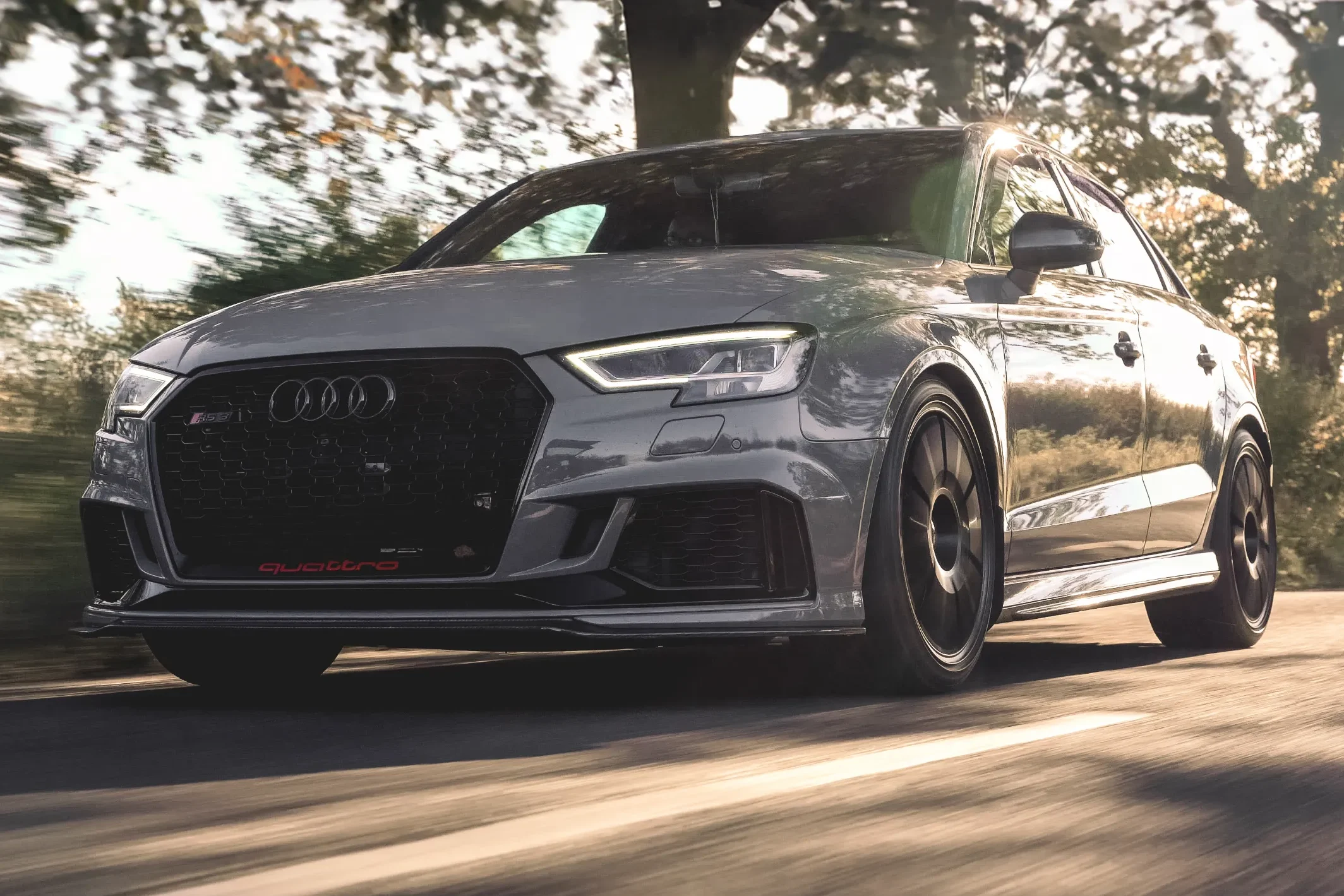
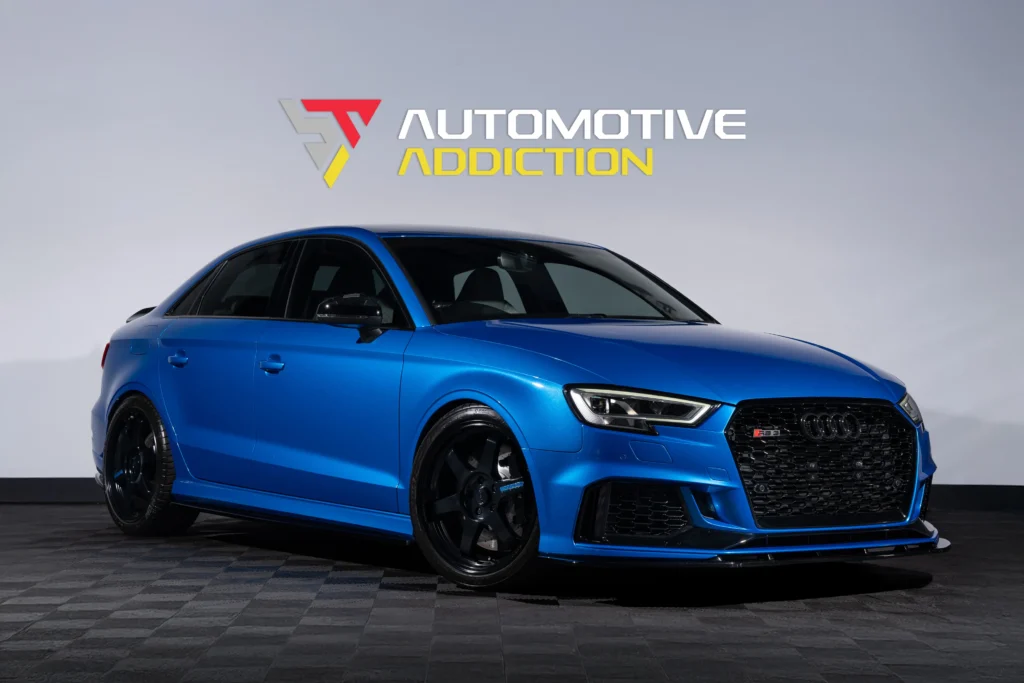
Audi RS3 8V Buyers Guide: Interior Trim Options
As standard the RS3 8V.2 came with trim inlays in the dash and door cards in a 3D carbon-effect. These could be upgraded to the Aluminium Design Pack for £295, which featured aluminium trim in carbon texture with additional ambient lighting. For those that love the lightweight weave, there was also a carbon-fibre inlay option that was £850.
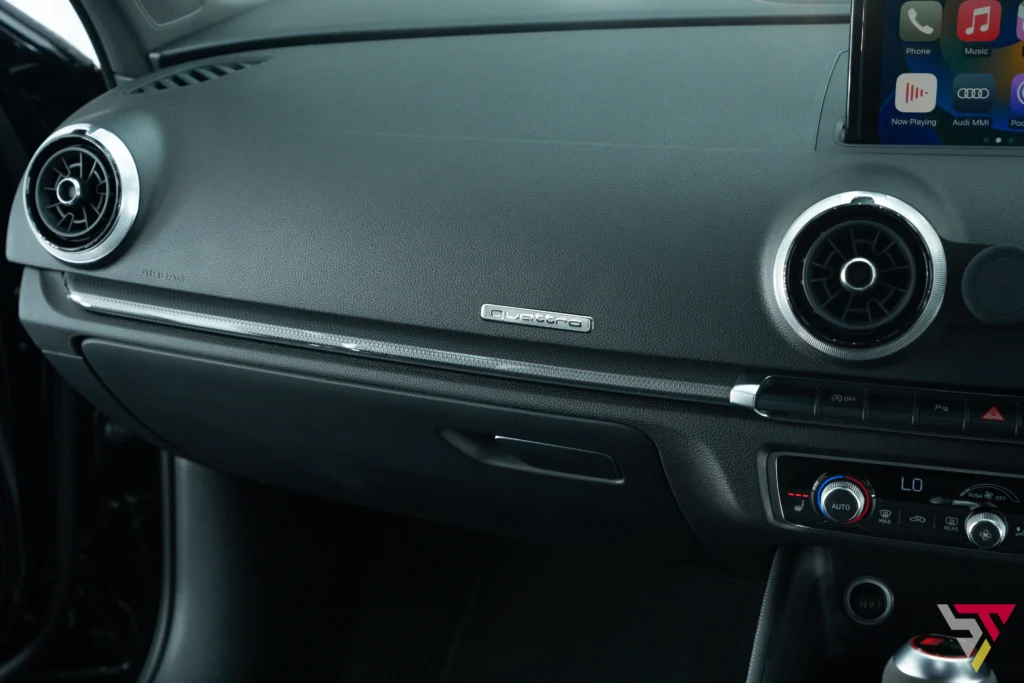
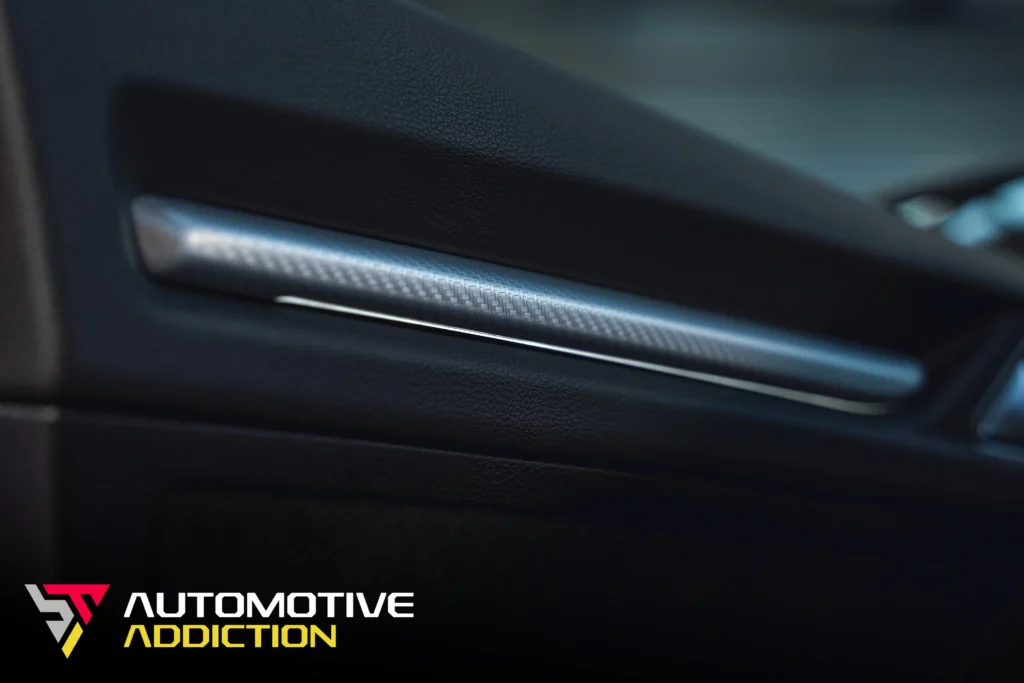
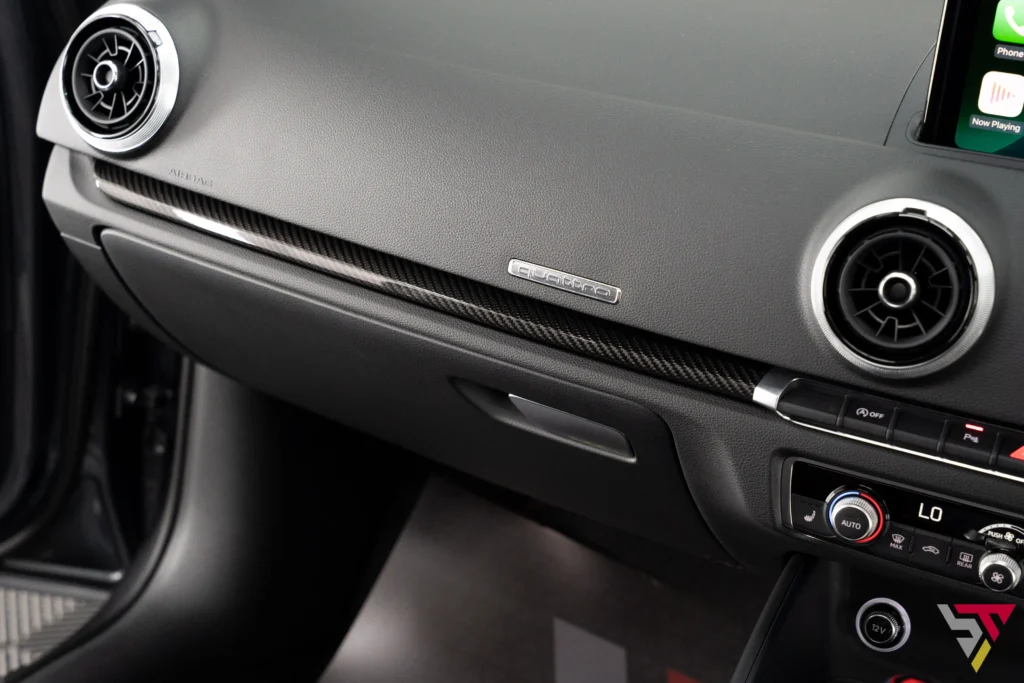
Standard Black Leather Seats or Super Sports Seats
Another of the must-have mods when specifying the 8V.2 was the addition of Super Sports seats. These were a £795 option that added bucket-style seats in black leather and diamond stitching. These are more supportive and sportier looking than the standard seats in black leather, although you could upgrade these with electric lumbar support for £250 or go fully electric for £850.
When it comes to stitching, you could choose Rock Grey or Crescendo Red as standard and this applies to both standard and the Super Sports Seats, although they come with diamond quilting. This stitching continues on the door card arm rests and the gear gaiter.
There was also the option for cream coloured leather called Lunar Silver which came with black stitching.
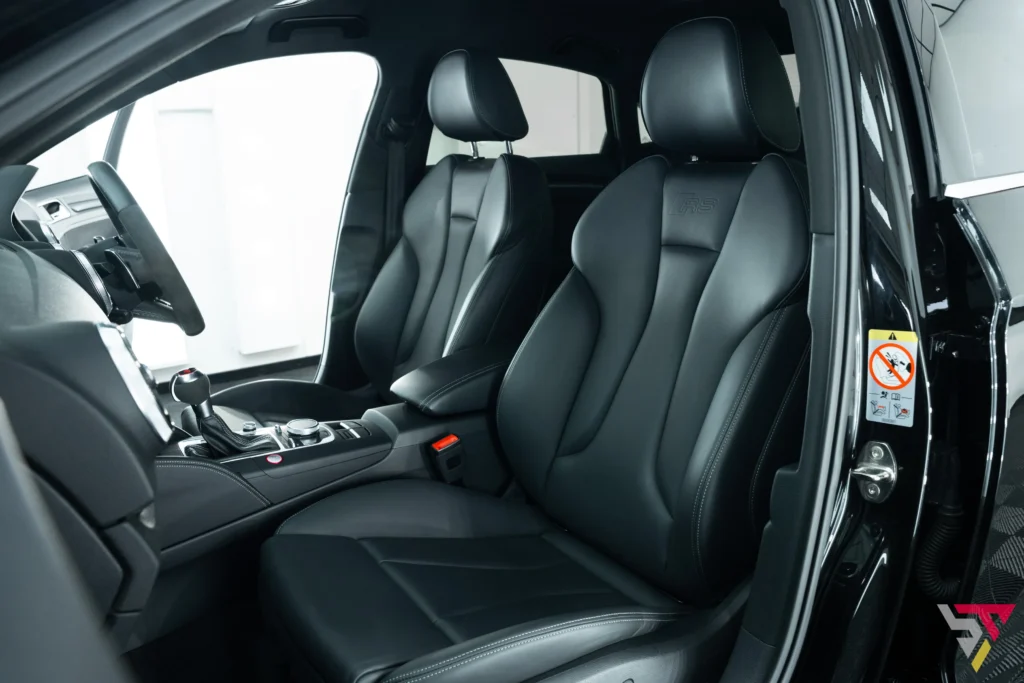
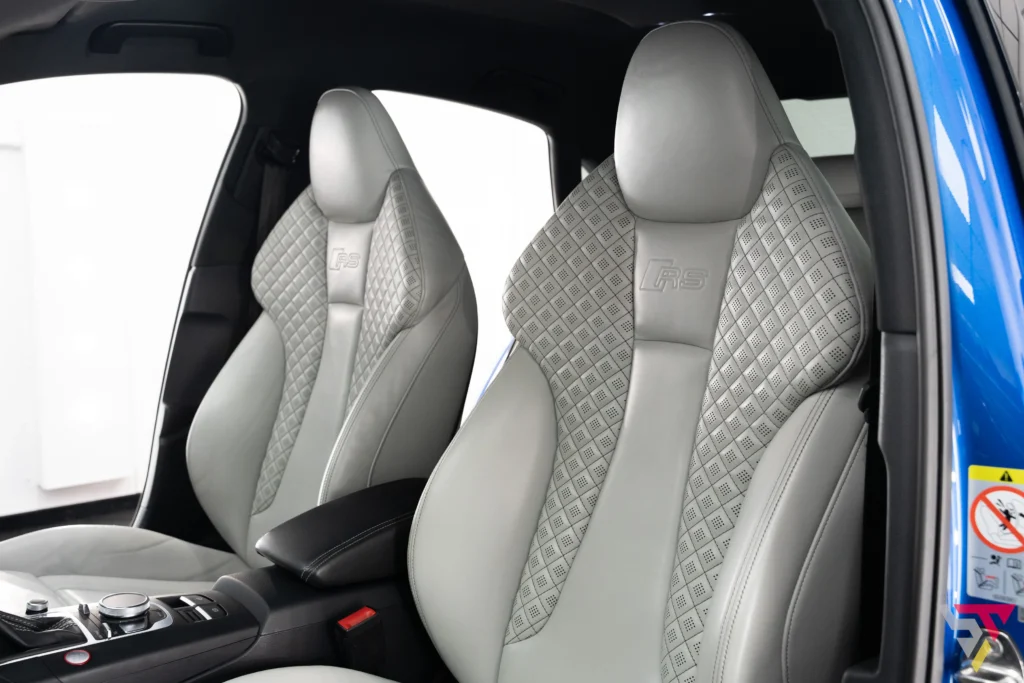
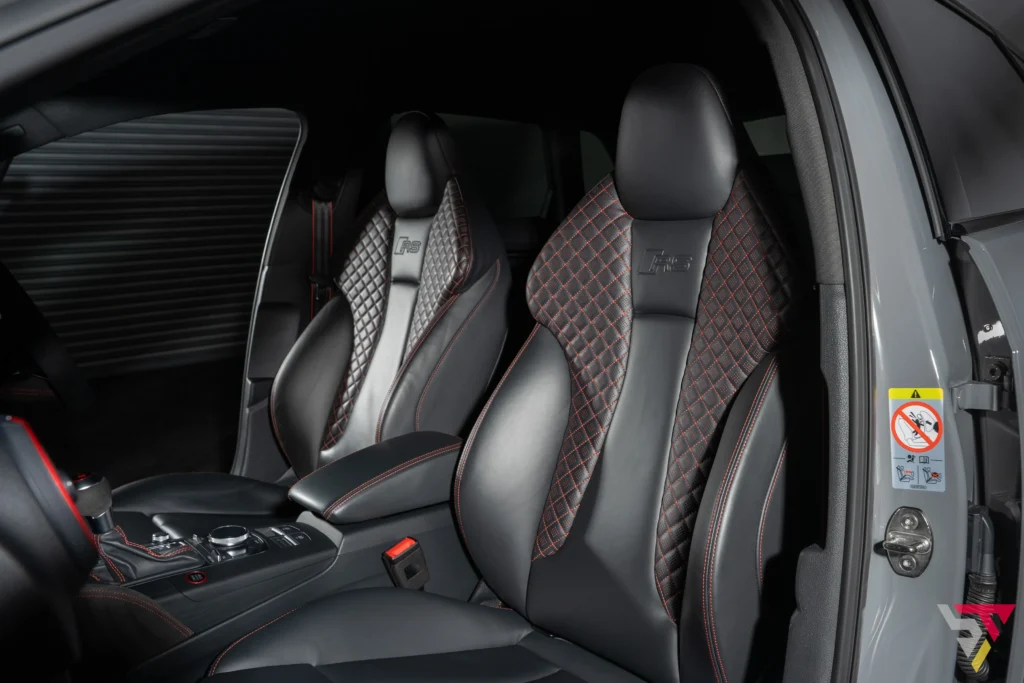
If you had rock grey stitching you could have the Extended Leather Pack for £275 which adds leather door card arm rests and leather knee pads, while those with Crescendo Red stitching could opt for the £895 RS Design Pack. This added leather door card arm rests, Alcantara knee pads, red air vent rings, RS embroidered floor mats, red interior stitching and seat belts with a red pin stripe edge.
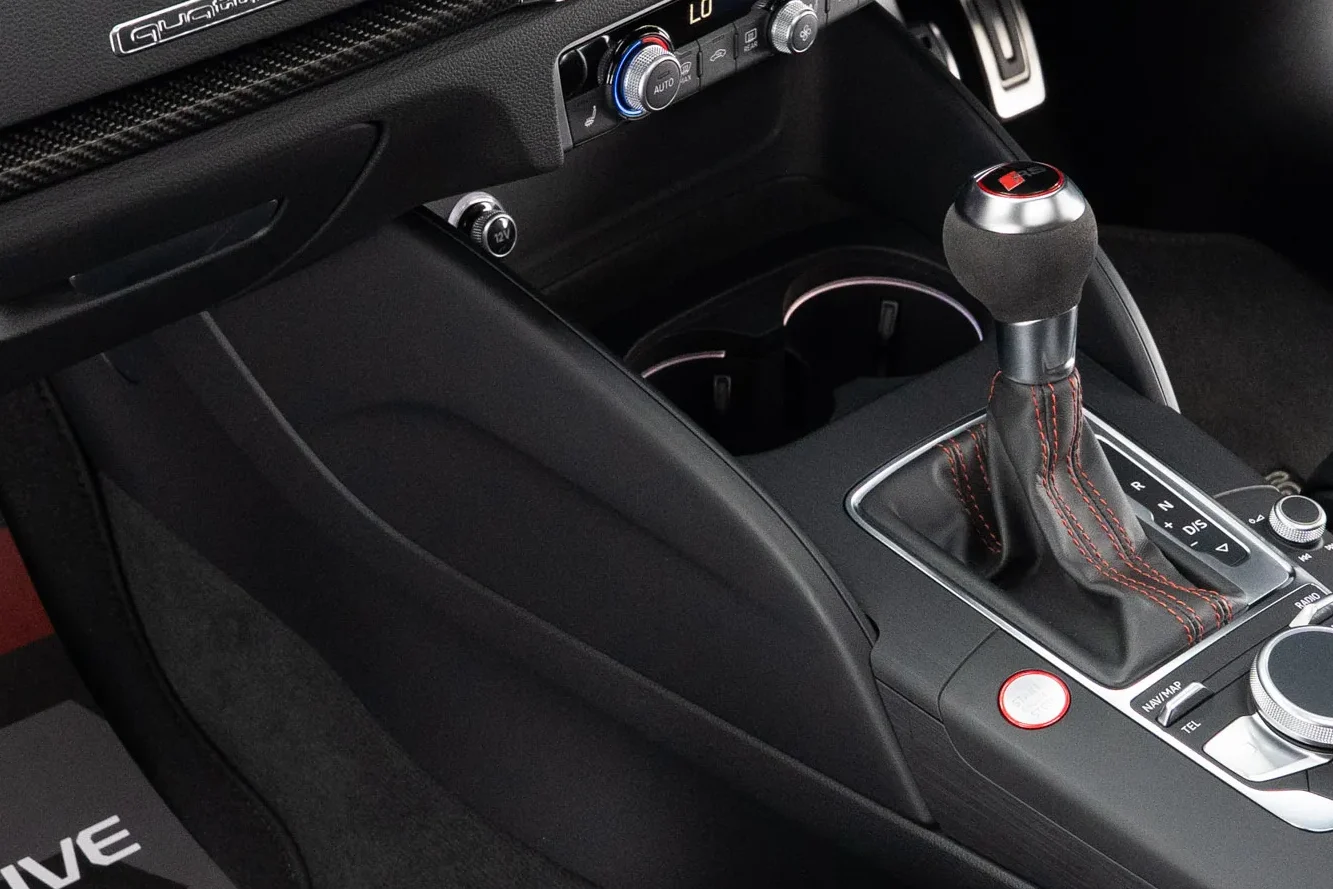
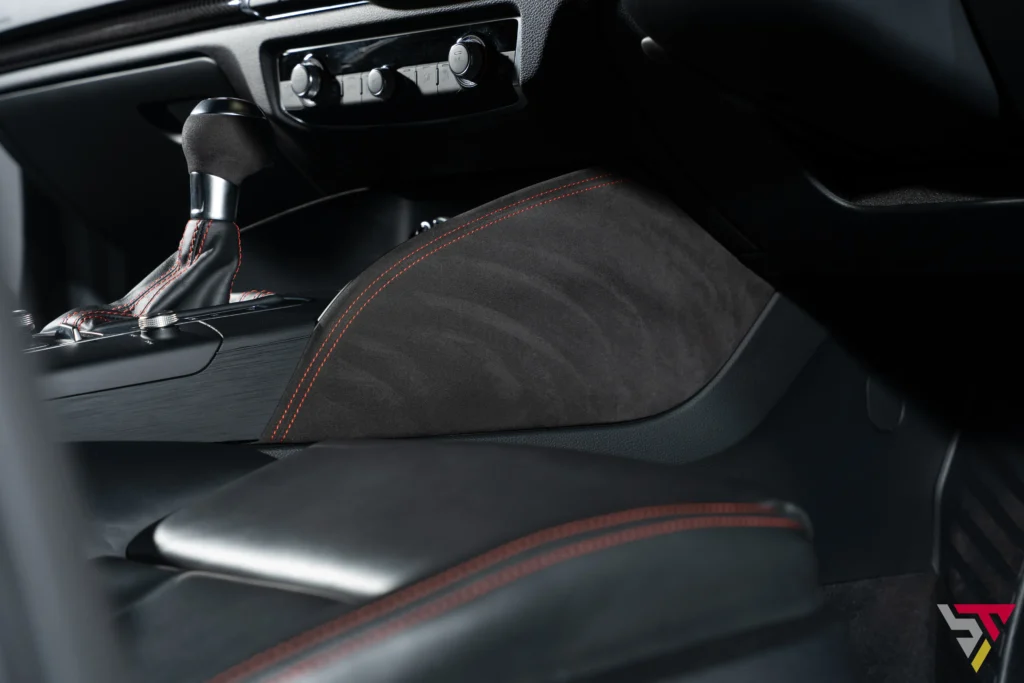
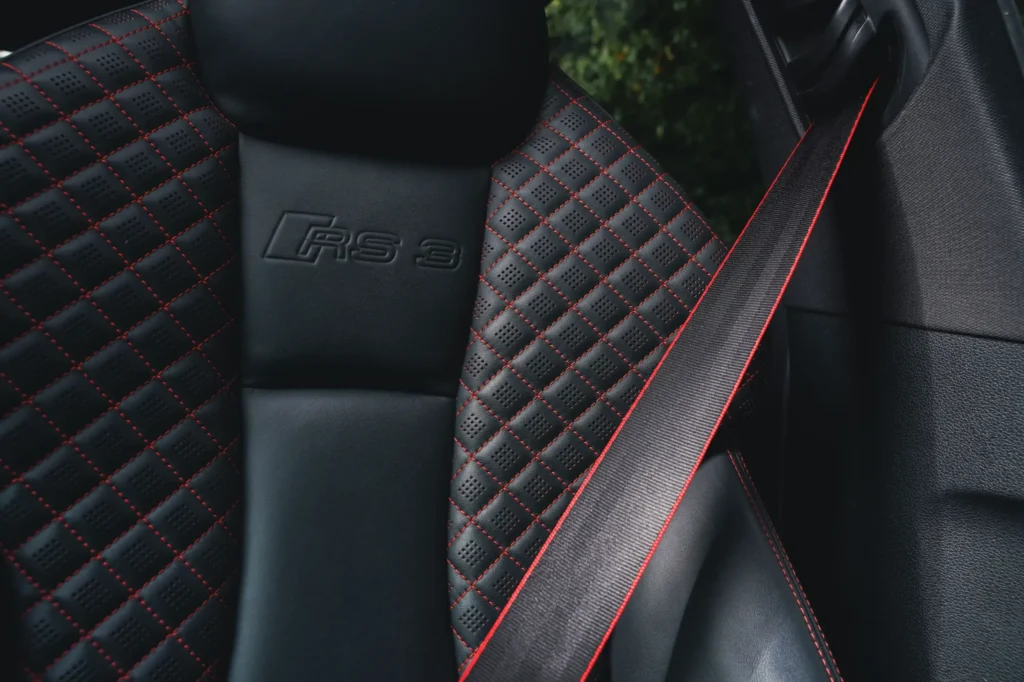
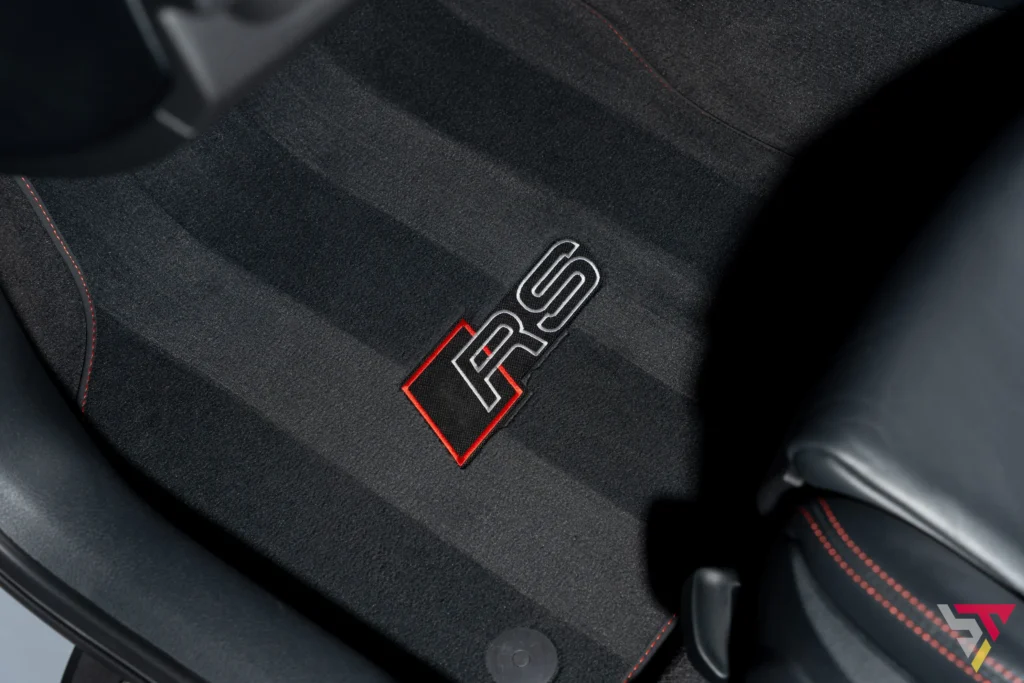
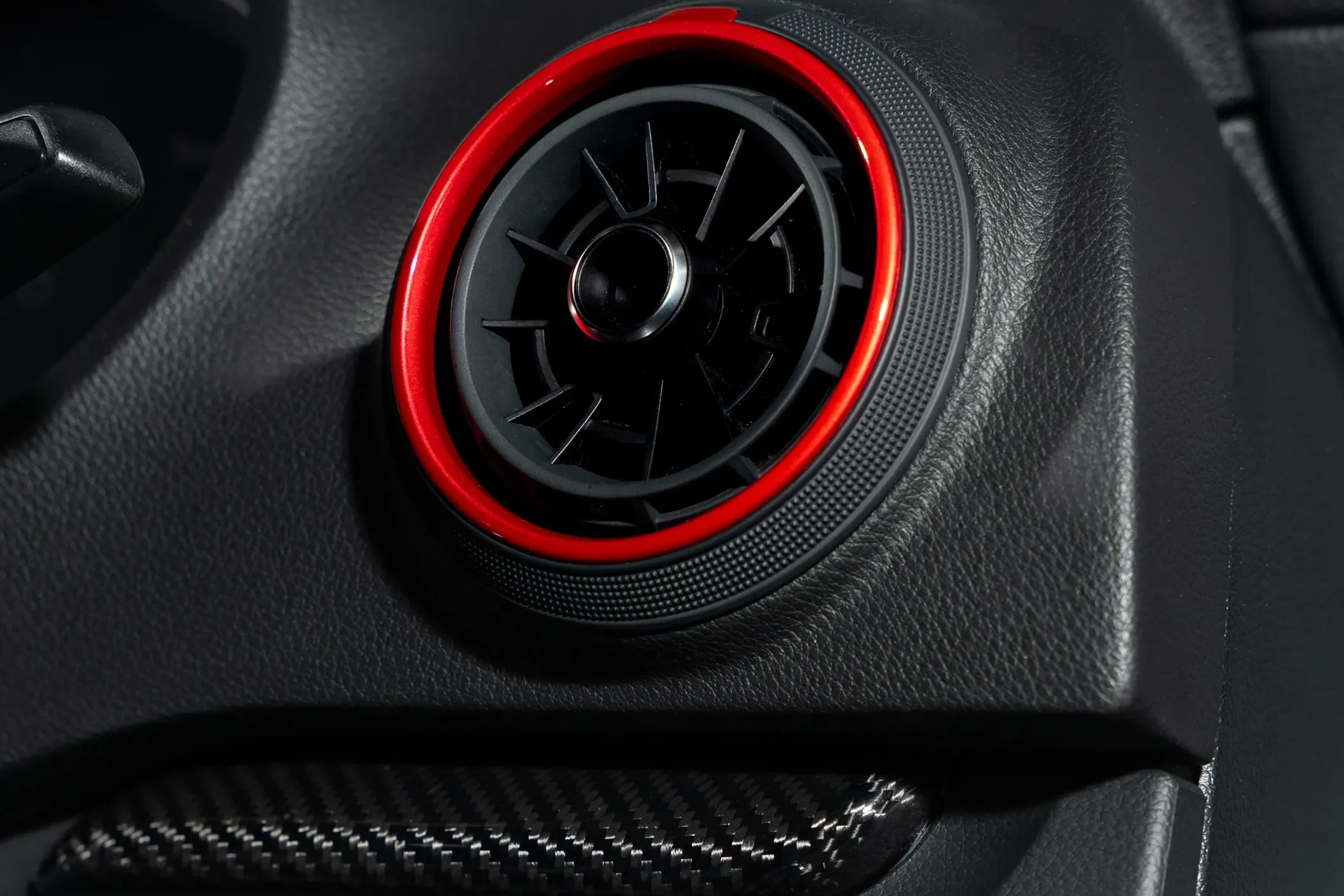
Driver Assistance Package
Costing £1250, this is one of the most expensive options for the RS3, but packs in a lot of tech for the money. It can be identified externally by the presence of a radar unit mounted in the front grille. This provides the car with adaptive cruise control, meaning once set, it will automatically regulate the distance to the car in front. On top of this clever feature is Blind Spot Assist, which lights an orange waring light in the wing mirror if something is in your blind spot; Emergency Assist, which primes the car and safety systems if it senses an impending accident and can also automatically brake to help avoid collisions; Lane Assist, which gently adds steering inputs to guide you back into your lane is you start to stray; High Beam Assist and a useful camera-based traffic sign recognition system that scans road signs to tell you speed limits.
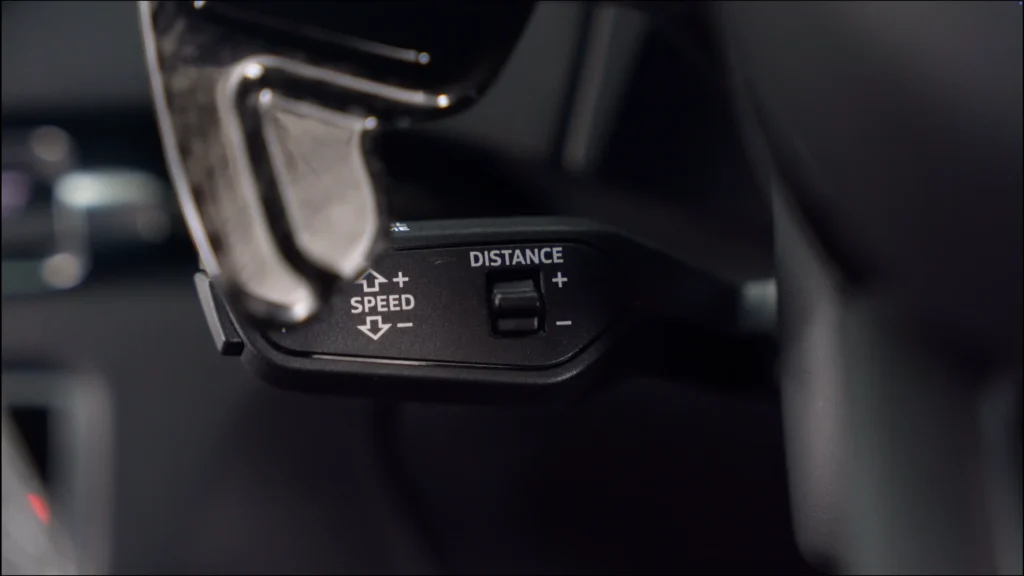
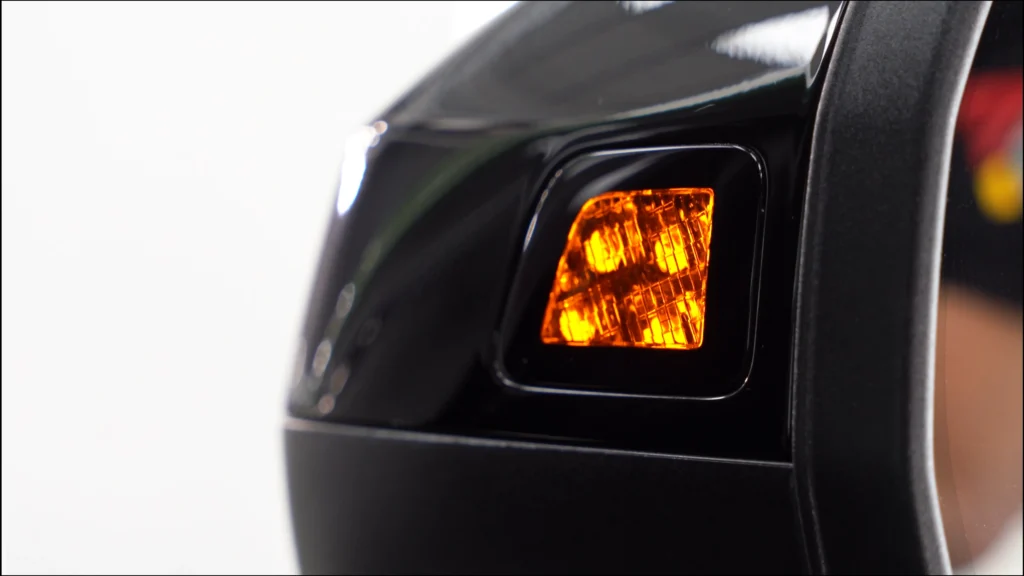
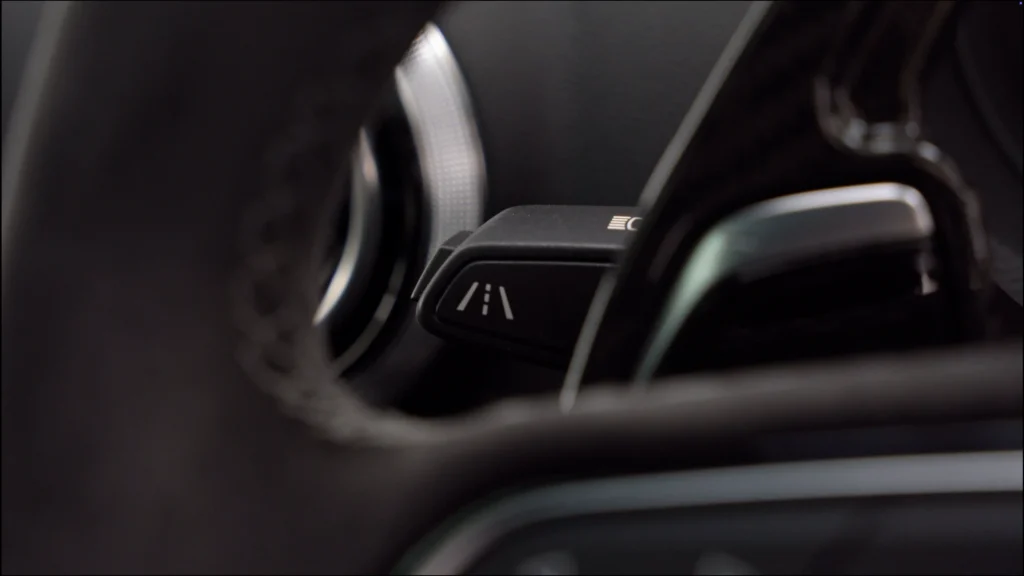
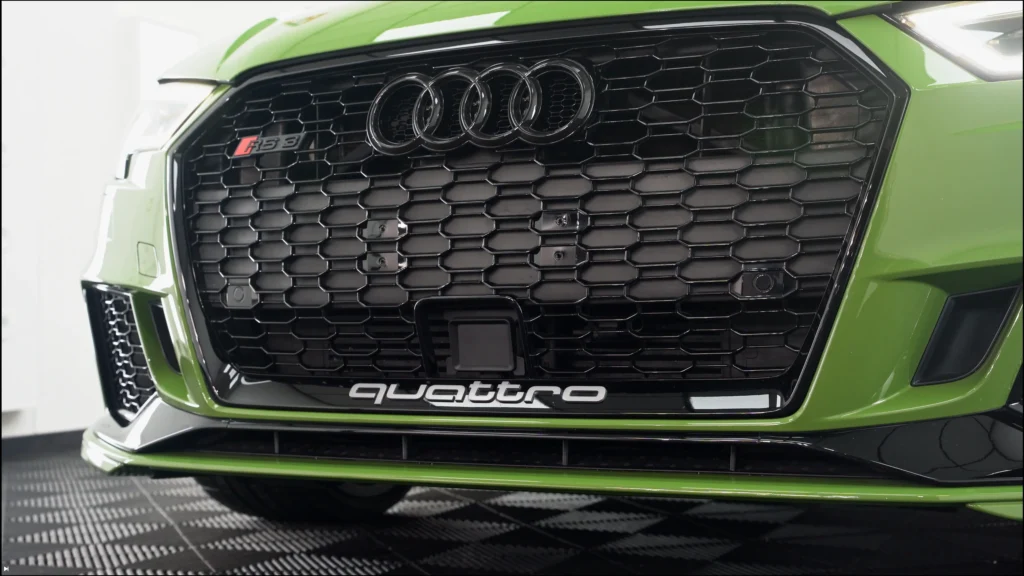
Comfort & Sound Package
This is another must-have upgrade as it adds the excellent Bang & Olufsen HiFi stereo system with 14 speakers and subwoofer. It also included Audi Advanced Key, which allows keyless entry and exit and keyless start and stop, a reverse camera and ambient lighting in the centre console cup holders and speaker surrounds. Although all these items were also available separately, by choosing the Comfort and Sound Pack for £995, you would actually save around £500.
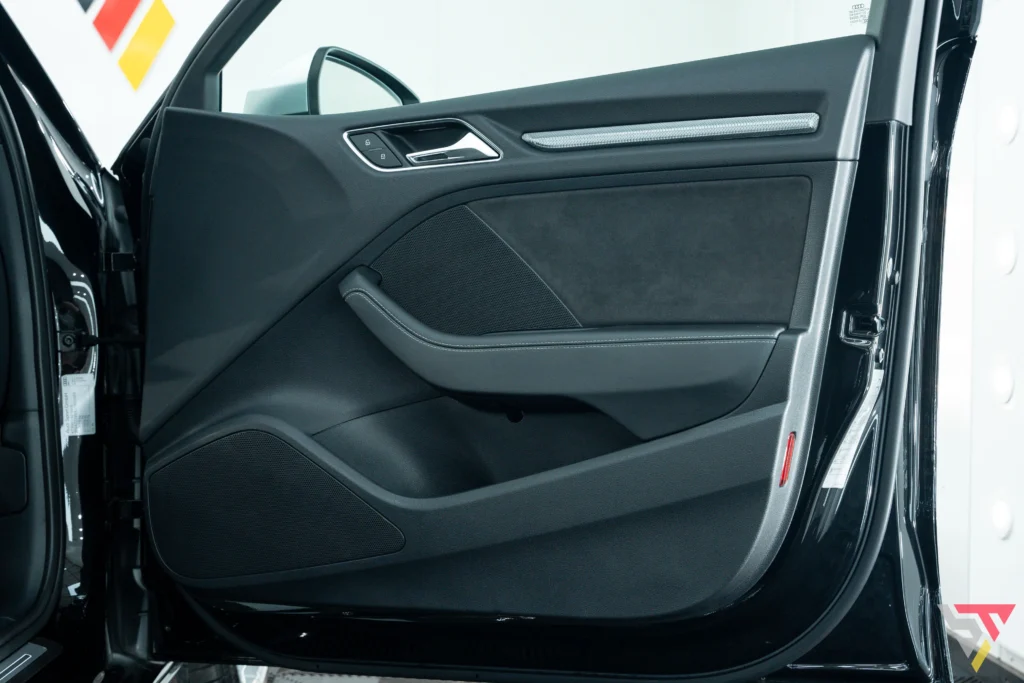
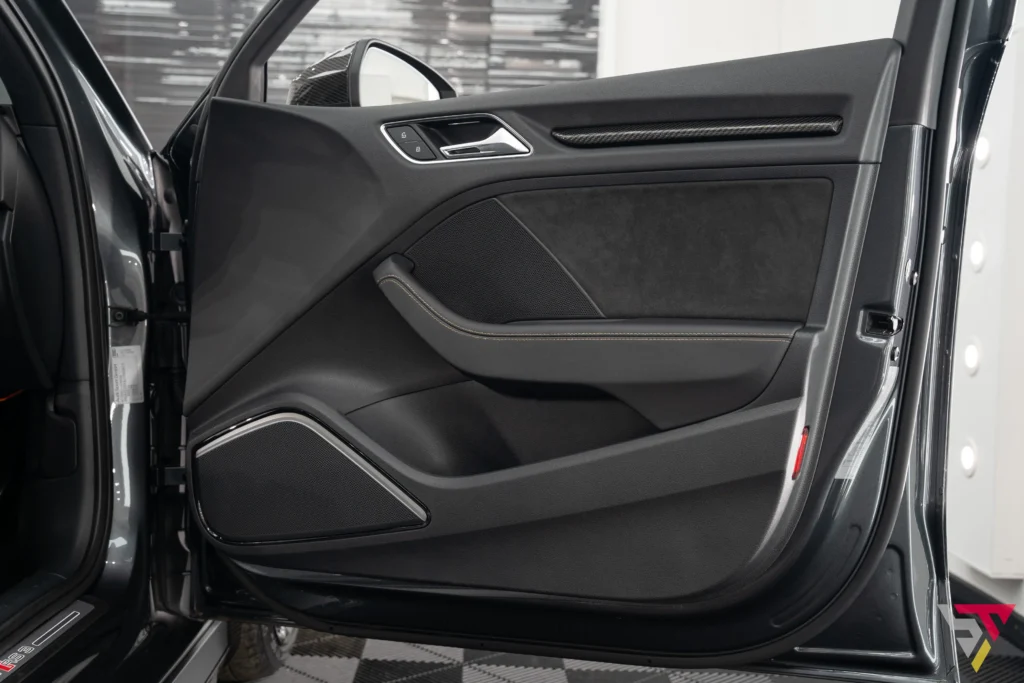
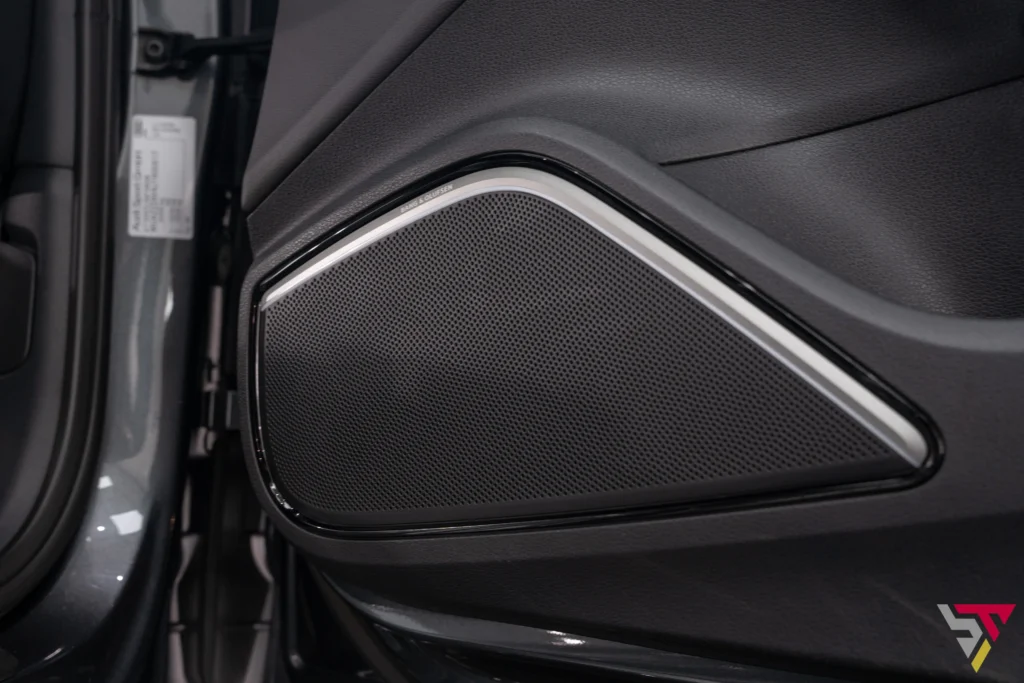
Extra Technology
Hill Hold Assist is a £95 option, while Audi Smartphone Wireless Charging added a wireless phone charger in the centre console arm rest cubby for £325.
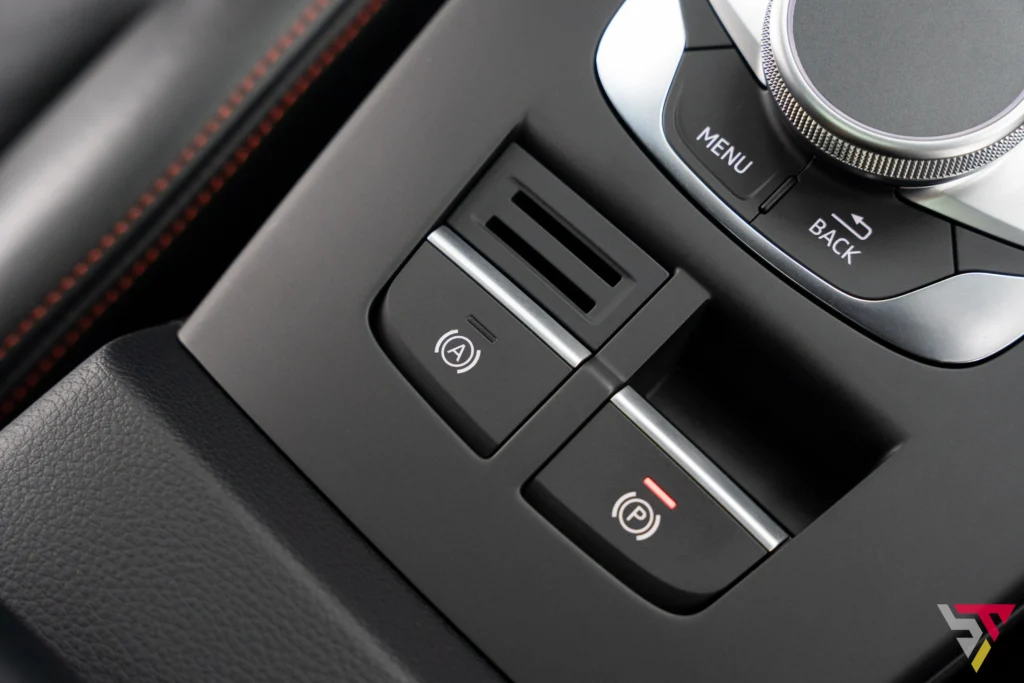
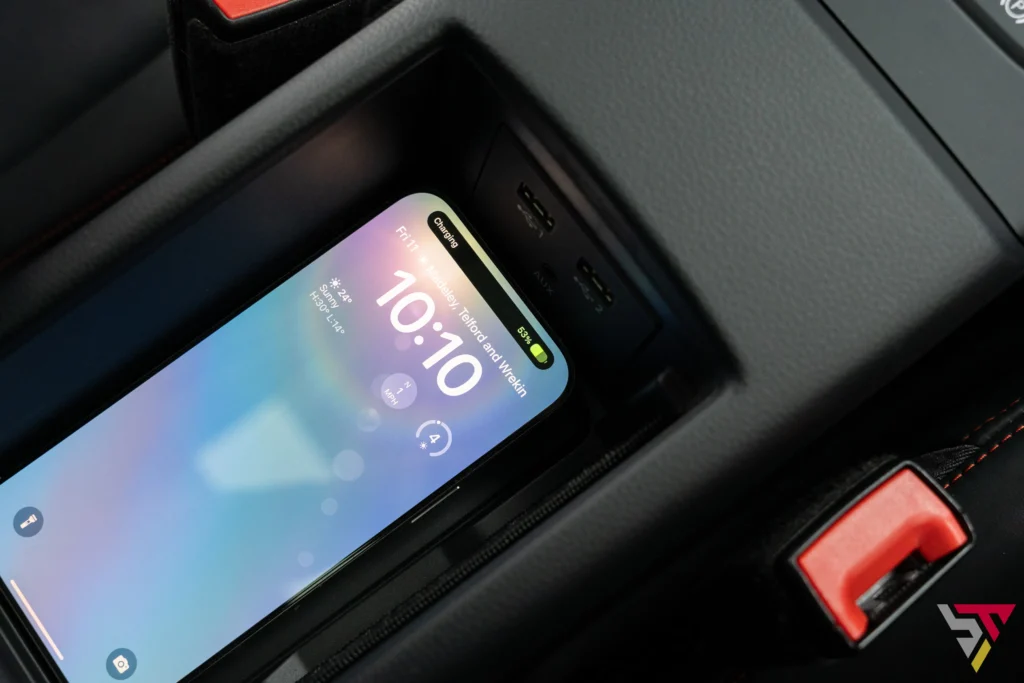
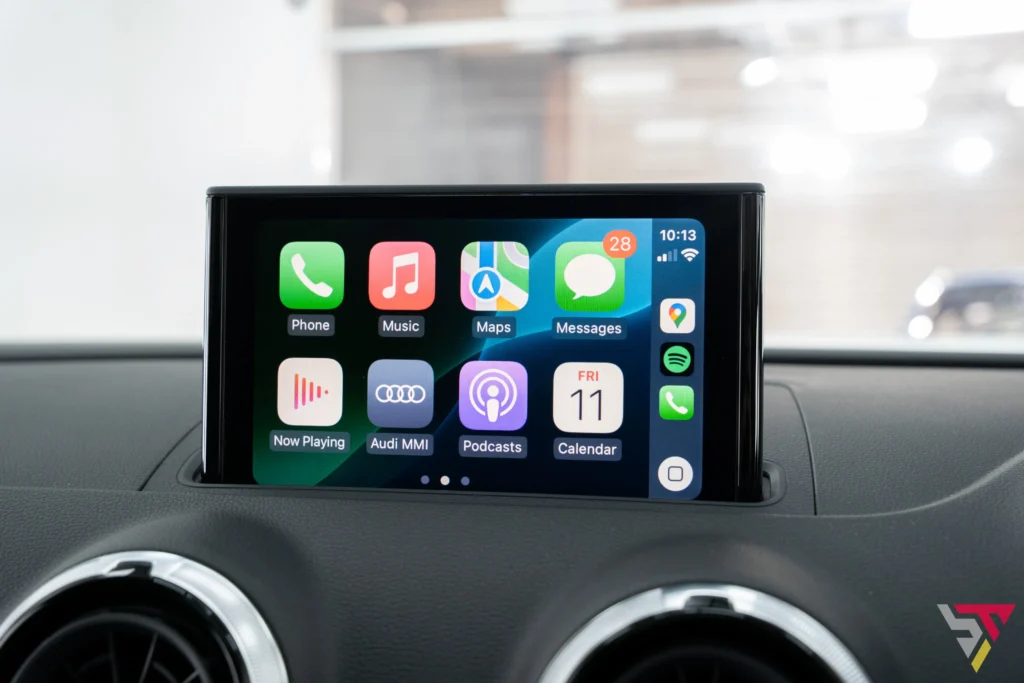
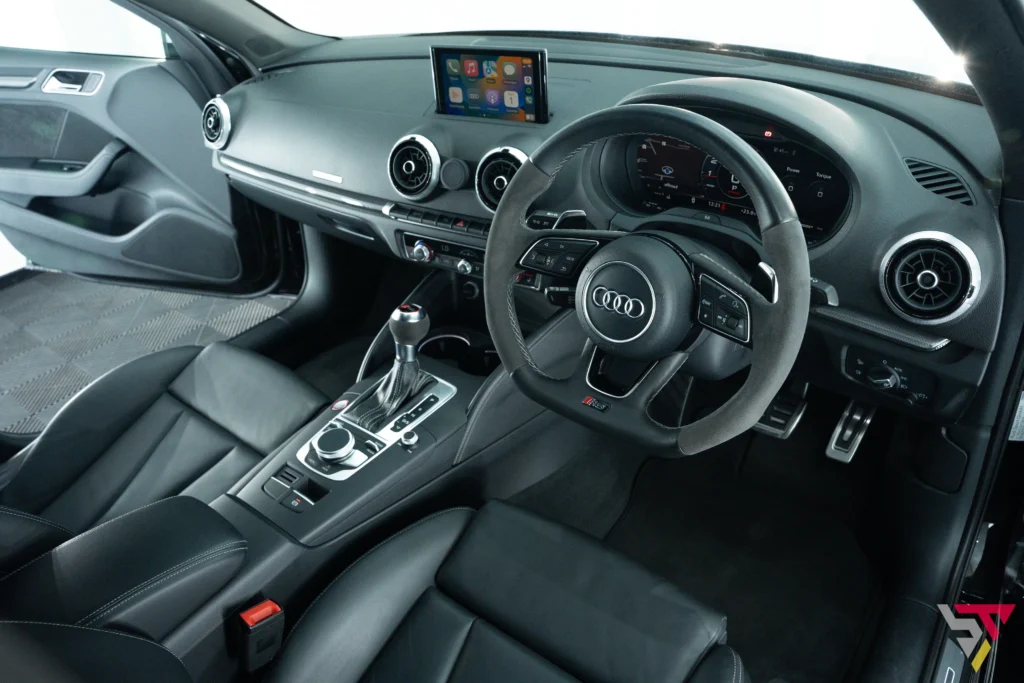
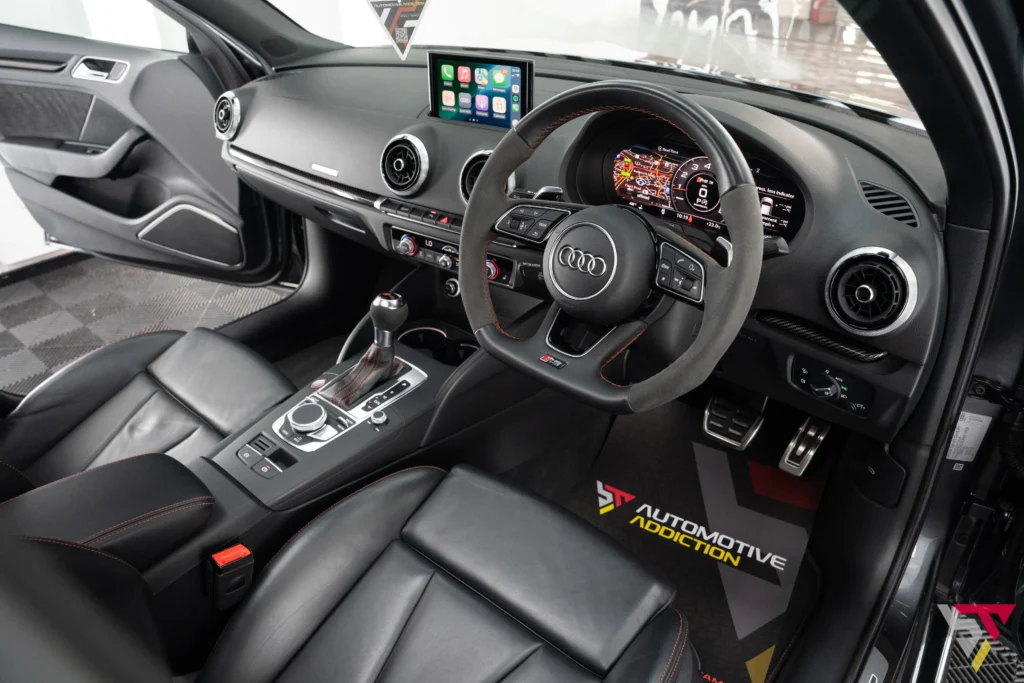
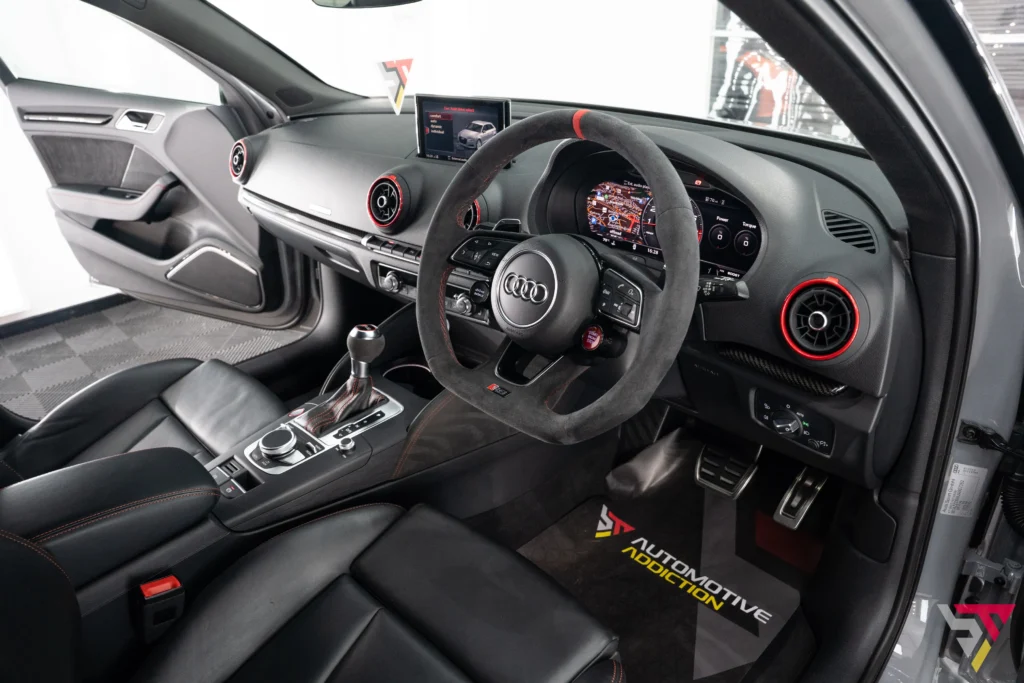
We want your Audi RS!
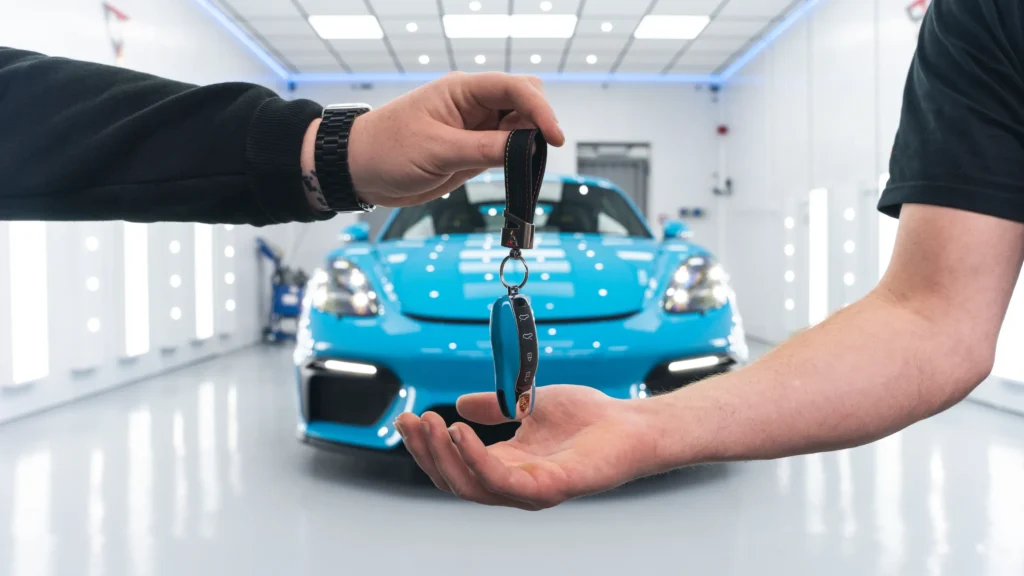
Sell Your Car with Automotive Addiction
- Free Bespoke Evaluation
- Drop-Off or Collection
- Instant Payment with Finance Settled

